This Superyacht will change cruising forever
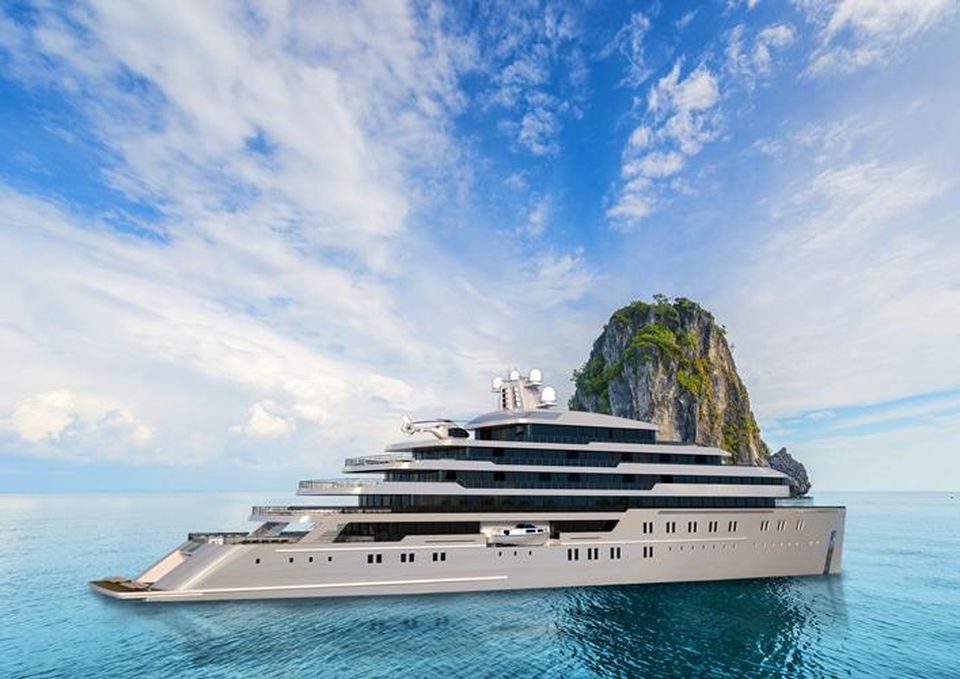
With an increasing interest on the market for smaller cruise ships that can provide the comfort and private surroundings of a luxury yacht with personalized service to match, Globe Regal has developed the stunning Perle Mesta, 393.7 foot cruise ship along with the acclaimed Veronika Schmid and Alistair Gill of New York architectural studios Gill Schmid Design and the Hijos de Barreras shipyards of Vigo who, are also the facility chosen by the Ritz-Carlton Group to construct their series of three 623 foot mini-cruise ships.
I had a chance to speak with Bill Thiem with Globe Regal about the new launch. Both he and Harry Peralta run one of the most acclaimed yacht brokerage and charter companies in the world. They are also offering up future launches for superyachts including; the 524.93 foot Project XIA, the 459.32 foot Project XENIA, the 401.90 foot ICON 120 and the 360.89 foot HALCYON, the original IDA PFEIFFER 229.65 foot Explorer, and the new 262.46 foot SEA THE STARS among others.
But it is the spectacular 393.7 foot Perle Mesta that will be the ultimate showstopper and certainly headline-making when it launches as a new luxury hotel line. Providing the unique opportunity to visit secluded coves and marinas that ships above 400 feet are not able to access. Among the industries small luxury cruise ships including Seabourne Odyssey (650 feet) and Ritz-Carlton Yacht Collection (623 feet), this new launch will be more intimate and certainly more exclusive. There will be only 50 rooms aboard for 100 elite passengers and 69 crew.
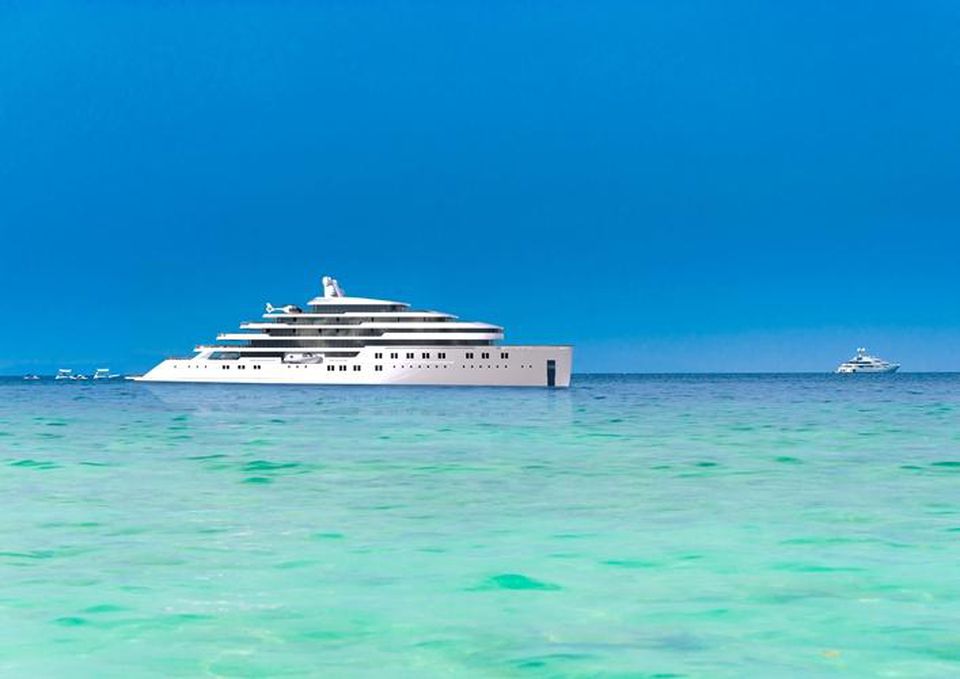
“We are working on a number of variants of the Perle Mesta designs with several European hotel chains who are showing considerable interest in the idea,” says Thiem. “There appears to be a growing tendency towards smaller ‘yachtlike’ cruise vessels that offer a more sophisticated and tailor-made experience for between 50 and 300 guests. Many of those operating are older craft that have been converted for the purpose but, we are now seeing a number of such “little ships” under construction for a very specific niche in the market.”
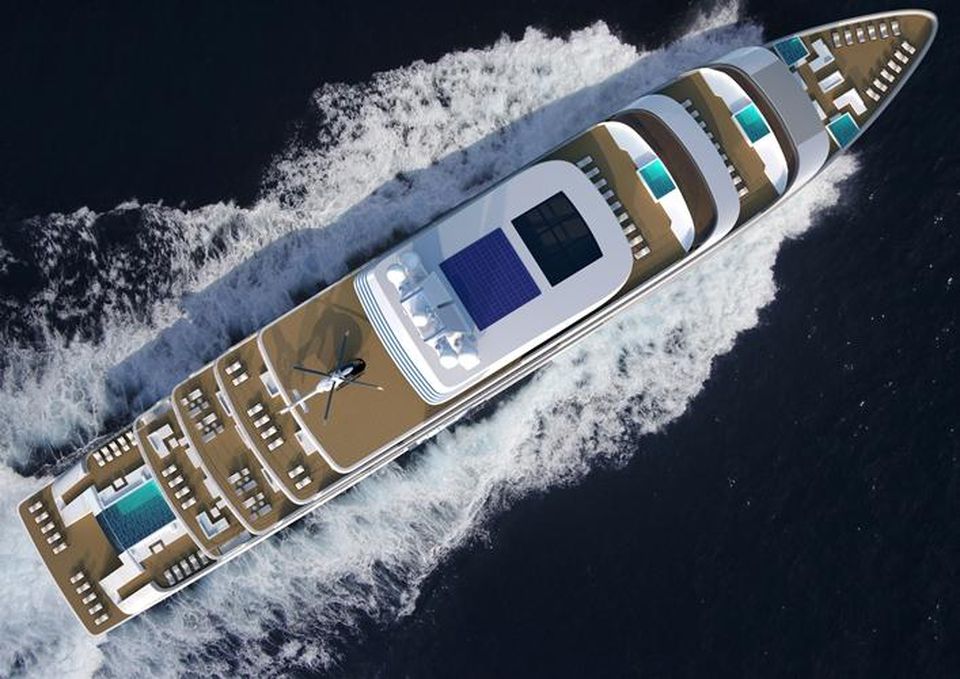
There will be just 50 signature suites up to 262 feet each with exterior views to the sea and a private sundeck or expansive folding balcony. There will be spacious indoor lounge areas and no less than 3 signature restaurants.
The vessel will be equipped with a spacious Beach Club and an infinity pool that allows guests easy access to the water for sporting activities such as scuba diving. Other activities offered will be water-skiing and underwater exploration in one of several 5 person Triton 3300 personal submarines that are planned to be kept onboard. Other toys will include a 39-foot limousine tender, a 36-foot interceptor, and even an Icon amphibious aircraft capable of take-off and landing on the water.
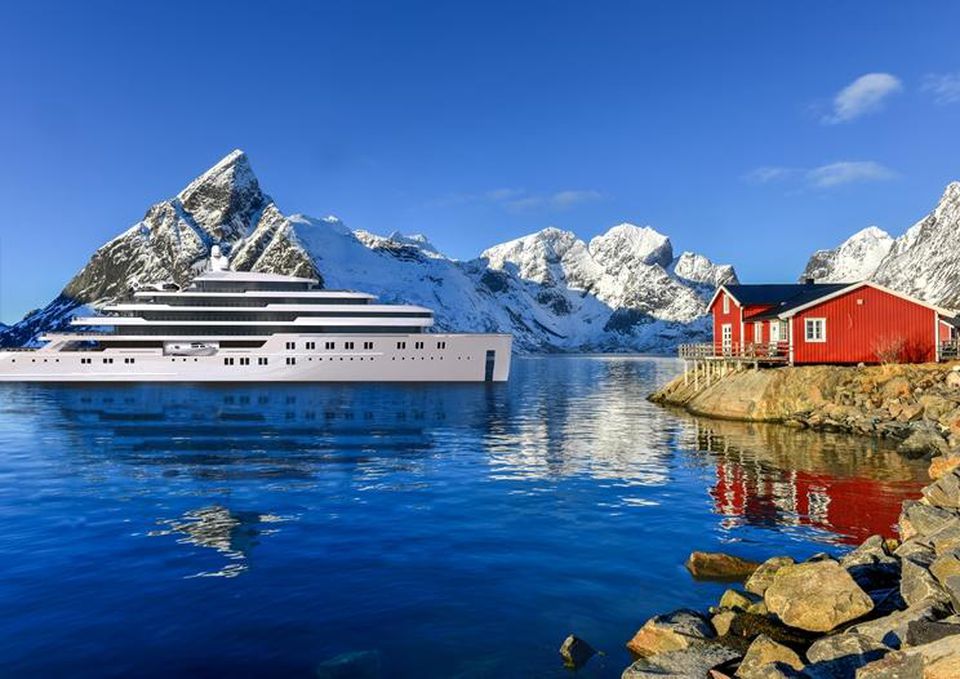
Thiem adds, “Tendencies in the new yacht construction market in recent years have included the introduction of larger and more sophisticated Beach Club areas that provide a closer relationship with the water and offer a much more comfortable way of embarking and disembarking when a yacht is not in port. Very often, these areas will include a sauna and steam room, massage room, gymnasium, bar and an array of water sports activities.”
“Luxury items will include sailing and ski boats, jet ski’s, professional diving equipment and kayaks as well as inflatable water slides and toys that can be set out for sunbathing or, be towed behind one of the tenders. Another more recent feature of large private yachts is to have a fire pit on the exterior decks. The inclusion of these somewhat dangerous components requires the chosen area to be specially adapted to become completely fireproof and stone floors often replace the traditional teak for this very purpose” says Thiem.
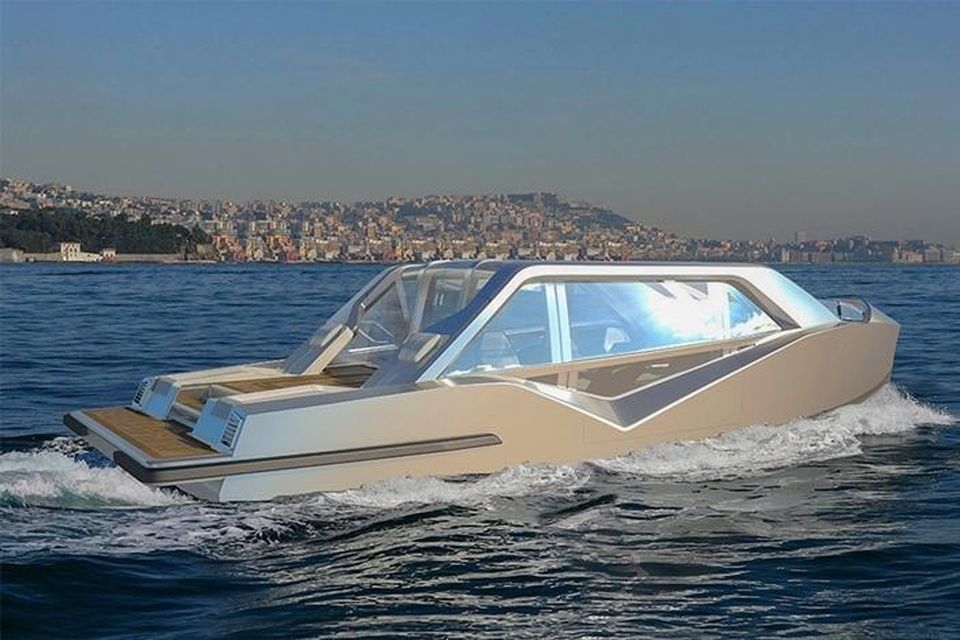
“Helicopters have long been a popular tool for ferrying guests on board whilst anchored out but, the complexities of keeping these craft on a yacht often lead to owners preferring to have a “touch and go” helipad rather than storing a helicopter on deck or, in a specialized hangar,” says Thiem.
“The need for speed has seen a very distinct decline over the past years as well, with most owners choosing displacement hulls or semi-displacement hulls that allow comfortable and steady passage making with economic fuel consumption. Most of the yachts that were once fitted with huge turbine engines that could propel them to in excess of 40 or 50 knots whilst burning several tons of fuel per hour have since been refitted and these propulsion systems replaced with smaller traditional units. Diesel-electric propulsion will ensure quiet and green passage making while underway.”


Luxury travel adventures in South America

Upmarket travelers are combining of epic adventure activities with unrivaled comfort. By now it’s become clear that luxury travelers are no longer satisfied with routine sightseeing, perhaps returning to their hotel for a massage. More and more it’s about “experiential travel”. Upscale vacationers seek to participate in unforgettable activities, getting out and about for a more authentic feel for their destination. Then too, who can deny the importance of returning home with well-deserved bragging rights after having literally “swam with the sharks” or made contact with a remote indigenous Amazonian tribe?
Looking at such adventure options from here in South America, we’ve come up with a short list of five innovative explorations that fit perfectly with some of our handpicked luxury accommodations.
Patagonia horseback riding tours
The vast and rugged landscape of Patagonia is painted with blues, greens and silver, as granite spires, glacier lakes, snowcapped mountains and daisy-filled meadows rob one of all words. Along with its pristine scenery, Patagonia is home to its own particular and legendary gaucho culture. Their horsemanship knowledge, as well as their passion for their land, enriches any traveler’s experience in Patagonia. In this strikingly scenic region, visitors — novices as well as experienced riders alike — can experience the excitement of trotting and cantering through the Andes or across the steppe.
On daily horseback excursions offered at the best Patagonia lodges, you can head out each morning through majestic Chilean or Argentine mountains on a horse from your lodge’s stable. In fact, there are few better ways to be actively introduced to the breathtaking scenery of the Southern Cone than by mounting up on a tough mountain horse specifically bred for this terrain. These steeds are friendly, easy-going, sure-footed and have plenty of stamina, while all of the best riding tours are led by experienced multilingual guides.
With awe-inspiring views of mountains and waterfalls, an all-inclusive Patagonian lodge is an ideal base for experiencing horseback riding through the pristine southern wilderness. Offering sleek eco-conscious design, the construction of the top-rated lodges is based on essential luxuries, allowing travelers to experience this remote region in its essence – without distractions.

Stomach grumbling? Try some freshly caught trout or venture into your lodge’s barbecue area for a spit-roast lamb prepared by Patagonian gauchos, and sample varietals of the best Argentina or Chilean wine. Wind down at your lodge’s bathhouse, which sometimes features a swimming pool and always provide stunning vistas. After a full day in the saddle, revel in the sublime comforts of home.

Galapagos diving cruises
Located off Ecuador’s Pacific coast, the Galapagos Islands are, of course, where Charles Darwin came up with his theory of evolution. Little has changed in these islands since Darwin came up with that theory, and countless mammals, reptiles, and birds continue to flourish here.
As this is a destination where protected marine mammals have no fear of humans, welcoming sea lions will swim up to you just to hi. Due to all this and more, Galapagos scuba diving can be found on almost every diver’s bucket list. The waters surrounding the Galapagos Islands are a world of wonder for scuba divers from around the globe. Whether you are looking to explore Galapagos from a liveaboard or with a land-based dive operator, a Galapagos diving tour will be an amazing experience and a true adventure as this Pacific marine reserve remains one of the most pristine areas on the planet for diving.
For novice divers or even snorkelers, it’s impossible to avoid bumping into one of those curious sea lions, who are always anxious to meet newcomers. At the same time, you’ll be surrounded by brilliantly colored schools of reef fish and possibly distracted by a huge green sea turtle gliding by or a majestic Manta in underwater flight. More experienced divers and those seeking an adrenaline rush will also find the sharp-toothed variety of underwater life amazing. In the Galapagos, you can count on hair-raising diving experiences with entire schools of scalloped hammerheads, menacing Black-tipped reef sharks, docile White-tipped reef sharks and elusive Galapagos sharks once you to take the plunge.
While you’re out enjoying the day’s underwater extravaganza, your ship’s chef will be preparing delicious meals that feature savory island seafood and sumptuous international cuisine. Returning on board, a luxury liveaboard diving ship will also offer you the chance to warm up in an upper-deck Jacuzzi, or lounge in the ship’s living room in an overstuffed sofa before savoring your gourmet meal. Smart accommodations include stylish cabins with en-suite bathrooms and private balconies for simply watching the archipelago’s spectacular scenery pass by.
As such, the adventure of viewing astounding underwater creatures combined with the creature comforts of your ship make for an undeniably tempting mix.

Exploring the Amazon
Imagine trekking beneath the jade-green Amazonian rainforest as a slow-moving sloth looks down at you perplexed. Picture yourself climbing up an observation deck positioned high above the rainforest’s treetops for an astounding opportunity to spot brilliantly colored toucans in flight or troupes of raucous Howler monkeys foraging in the distance. Now see yourself paddling along blackwater jungle creeks to tease piranhas, or participating in a spiritual cleansing ceremony by an indigenous shaman. The jungle is an overwhelming shock to the senses.
All of this adventure can be experienced while staying at one of the luxury Amazonian lodges that have emerged over the last couple of decades. In this exotic rainforest setting, a whole range of adventure activities are combined with comfortable suites, high-quality personal service, the very best naturalist guides, and delicious dining.
Activities at these lodges include rainforest hikes, exotic wildlife watching, authentic contacts with remote indigenous communities, and nocturnal caiman-spotting canoe trips. Plus, all of these adventures can be customized according to the traveler’s specific interest.
To help travelers spot the often elusive Amazonian wildlife, as well as to truly grasp Amazonian culture and the way of life of its inhabitants, top-notch naturalist tour guides are an integral part of these lodges. These tour leaders are key in promoting the natural cultural and heritage, and at the same time impressing on visitors the significance of the sites, communities and creatures that you experience.
The lodges themselves offer spacious and comfortable cabins with private en-suite bathrooms equipped with rainforest showers, ceiling fans, private balconies, and fantastic views. For parents with children, family suites are available, with each of these cabins including amenities such as extra spacious rooms and private tubs.
In addition to the comfortable suites, these lodges have their own restaurants that serve delicious local and international dishes that can be savored in tandem with beautiful jungle- and lagoon-side views. At the end of a day of primal Amazon exploring, turn in for the night by slipping under luxury linen while surrounded by the orchestra of sound of the jungle night.
Trekking the Inca Trail to Machu Picchu in style
Three- to five-day treks through the legendary Sacred Valley of the Incas to Machu Picchu citadel is a magical adventure. Such a historical journey high into the Andes will hold special memories that will remain with you for the rest of your life.
Typically, this demanding yet rewarding hike requires hauling a fully loaded backpack through this mountainous setting for up to up seven hours daily; then, at the end of each day, travelers roll out their sleeping bags to get a little sleep in their tents after heating up their meal over a campfire.
For travelers who seek the same emotional high from this inspiring adventure — but with substantially more comforts and led by the most experienced guides — a luxury Inca trail tour program has been designed. On this trek, travelers hike along a route that takes them from upscale lodge to upscale lodge.
While still enjoying a challenging trek each day, each evening these adventurer/guests can enjoy all the comforts of a luxury hotel, including fine Argentine wine, sumptuous meals, relaxing piping-hot showers, and welcoming common areas where you can kick back and relax with a nightcap. A key ingredient of this program are the guided cultural excursions that take you on authentic village visits and to sacred sites in the Sacred Valley and the highlands above. In this program, all guests are accompanied by a certified local guide, while porters employed from the local area securely transport your luggage, food and cooking equipment. Freed from such hassles of travel, your focus will be on experiencing the very best of the near-mythical Machu Picchu and Sacred Valley.

Self-driving across the Uyuni Salt Flats
One of the top adventure experiences in all of South America is exploring the mesmerizing Salar de Uyuni salt flat. Here, a thick crust of polygonal patterns of salt extends into the horizon, covering over 4,050 square miles to make this the world’s largest salt flat. The result is one of the most extreme and remarkable vistas in all of Latin America …if not the planet. Added to this, at certain times of the year, nearby lakes overflow to form a shallow film of water that transforms the flats into a stunning mirror of the sky – an effect that must be experienced by any adventure traveler.
But when thinking of experiencing a Uyuni salt flat adventure, why not consider renting a car instead of booking with a tour group? What you’ll find are several benefits to going this route. For one, any traveler who has ever rented a car knows how much freedom is gained by being able to stop wherever you want, making your home wherever you park. In addition to this freedom, you can be more flexible in terms of the duration of your trip. While package tours usually extend two or three days, car rental allows you to stay for as long as you want – crisscrossing the salt flat to experience this amazing destination to its fullest. Along the way, you’ll meet local people who will help you with your journey, creating chances to learn more about each other’s culture! Indeed, staying a little longer at each place provides you the added luxury of making connections that you often don’t build when traveling in a tour group.
As for salt flat accommodations, some of the best hotels in Uyuni are actually made of salt! Impossible? Not really. Not only is everything in these hotels made from salt — from the ceilings to the furniture — but these hotels are also known for their great service, dramatic views and excellent facilities. You’ll even find that one of these salt hotels is a 5-star luxury lodge. Yet all of these hotels are ideal bases from which to explore the Salar de Uyuni. Add to this the fine wining and dining that’s offered, and what you’ll have is a number of spots where you can comfortably turn in after a long day on the road.
In short, if you’re seeking unforgettable adventure complete with all the bells and whistles, think South America.
By Alfonso Tandazo, President and CEO at Surtrek Tour Operator.
A year in Provence

Provence is an astonishingly versatile region and truly a year-round destination, why not spend a year?. To help you decide when to plan your trip I thought we’d take a little journey through the months, beginning with December, taking a look at what’s on offer at that time of year. Whether you’re looking for a weekend getaway or two weeks R&R, I’m confident Provence should be at the top of your go-to list. And if you think I’ve missed any key events, feel free to add them in the comments below!
December
I know, I know, normally a 12-month guide would begin in January but, at the time of writing there is still the opportunity for you to get your skates on and book a trip down here over the festive period. If you can, you really must! The run up to Christmas and New Year really is very special and you’ll be glad you made the trip. Cheap flights are available into Marseille courtesy of the low-cost airlines like EasyJet and there is plenty to keep you occupied for 48hrs or more.
Make sure you find time to visit a Christmas market (or two) where you’ll find some great gifts and plenty of fantastic food and drink to sample. Try ice skating in Cassis or head to Arles the week before Christmas to take in their ‘funny’ Christmas festival, the Drôles de Noëls, which sees circus performers, puppeteers, magicians and much more turn out onto the city’s streets along with scheduled fireworks displays. Needless to say, if you can stick around for Christmas itself then do!
January
I’m biased, but I can’t think of a better place to welcome in the New Year than Provence! New Year is enthusiastically celebrated and you’ll definitely be able to find a good fireworks display to watch. Come the 1st of January, wake up to air that is crisp and fresh and a palpable sense of optimism in the air for the year to come.
New Year aside there is plenty to do during January. Whilst some tourist attractions will be closed, many more remain open and delightfully free of crowds. The village of Lourmarin is a classic example… as one of the most popular villages in Provence it’s heaving during the summer months but much quieter during the winter. A year-round cultural programme ensures there is lots going on and the excellent bars & restaurants remain open. Love seafood? Head to one of the many coastal towns at the weekend to enjoy one of the open-air seafood feasts that are held weekly.
February
February is a fantastic month to organise a mini-break. With the Christmas festivities feeling like a distant memory but spring yet to, well, ‘spring’, it can be quite a depressing time of year. To counter the winter blues, get a weekend break booked in your diary now so you have something to look forward to.
With Valentine’s Day mid-month, it can double up as a romantic surprise for your significant other. Start your mini-break in Marseille with its endless cafes, boutiques, museums and restaurants. Hire a car and head up to Aix-en-Provence which is a feast for the eyes and senses, from the St. Savour cathedral with its cloisters, to the bubbling fountain of Place des Quatres Dauphins with its water-spouting dolphins.

March
Unlike more northern climes, Spring is definitely on its way in the south of France come March with temperatures beginning to hit 15C. This makes it the perfect time to go hiking, not too hot and not too cold.
There are endless trails and tracks to follow throughout the region which work their way along the coast or through national parks. The Calanques are one such destination that is perfect for hikers. Take in breath-taking views of cliffs and sea plus, in March, you will have this amazing landscape almost to yourself.
April
The vines are beginning to come to life as another wine growing season kicks off making this a great time of year to focus on wine!
A good starting point is the ‘Les Printemps de Chateauneuf-du-Pape’ Salon des Vins (6th – 7th April 2019). As many as 90 producers will be presenting their wines for you to sample, so it is a unique opportunity to discover the diversity of Provencal wine production. Even better, wine can also be purchased. As is usual with these wonderful French events, there will be tasty ‘eats’ plus a gourmet market.

May
The weather is now definitely feeling more summery making a trip to the Carmargue a truly pleasant experience.
This renowned region is home to more than 400 species of birds as well as lots of other wildlife including the famous Carmargue horses. The annual Festival de la Carmargue is being held from 3rd to the 9th of May 2019 and promises to offer an extensive program of activities. A must attend event for wildlife lovers.

June
With the real summer weather finally here, the festival and market season really begins! There are too many festivals to list but in short, you won’t struggle to find events to attend. The Fete de la Musique is normally held towards the end of June with individual concerts organised right across the country.
Market lovers rejoice… whilst French markets tend to be year-round events they gain some added vigour with the warmer weather. Ask your hotel for details of the best near you.

July
The hottest month of the year! And with it comes the lavender with acres and acres of this sublimely scented, vibrantly purple plant marching across the landscape. It really is a sight to behold and well worth experiencing in person.
And after a day out exploring the lavender fields why not treat yourself to a decadent evening sipping chilled Rosé and enjoying a superb meal at one of the several Michelin starred restaurants in Provence. Bastille Day is on the 14th July and will be celebrated throughout France with Provence being no exception. Fireworks are a norm, but Marseille, Aix-en-Provence and Toulon offer some of the best, so expect lots of spectacular flashes and bangs!
August
Time to head to the coast! From Marseille heading east, there are a whole variety of seaside experiences waiting for you, from the fabulous Parc National des Calanques with its breathtakingly beautiful inlets (now best explored from the sea rather than on foot), to family friendly, but ‘classy’ resorts such as Bandol offering a choice of several beautiful beaches to enjoy. In-between, the coastline dips and winds between multiple fishing villages, creeks and bays.
September
There’s always lots going on in Provence during September. The weather is just a touch cooler with some arguing this is more pleasant than the raw heat of the summer. In addition, the bulk of the summer holidaymakers have left, making travelling around a little easier. Septembre en Mer (September by the Sea) is a notable attraction with a month of over 200 marine-themed events up and down the coast, particularly around La Ciotat, Cassis and Marseille.
The foodies amongst you won’t want to miss the government-sponsored Fête de la Gastronomie. This is a nationwide celebration of all things ‘foodie’ normally held towards the end of September.

October
Another great month for wine lovers! The harvest is in full swing and the energetic might want to take part… many wineries will be only too happy to accept some extra help. Wine fairs (Foires aux vines) also feature prominently on the events calendar. These offer a great opportunity to stock up with some bottles for Christmas at heavily discounted prices. For those of you that are organised, book in advance for the Saint Victoire rally.
This involves a day-long hunt around the region’s vineyards by car with plenty of eating and drinking involved (well for the non-drivers anyway!). It’s a sell-out event each year so remember to register well in advance.
November
It’s hard to believe we’ve almost already gone full circle with the arrival of November. Despite the summer being over, this is still an amazing time of year to visit. Marseille plays host to Savim – a well-established gastronomy fair normally held in late November. It also happens to be the largest in France!
Keeping with the foodie theme, head to the village of Richerenches to celebrate the official start of the truffle season with the first truffle market of the year at the historic village of Richerenches.
So, when is the best time of year to visit Provence…? Well I’d say January, February, March, April, May June, July, August, September, October, November or December!
By Su Stephens, Owner of Olives & Vines. Olives & Vines is a luxury holiday company based in the South of France offering stays at their beautifully designed holiday house and boutique hotel in Le Castellet.
The Best European ski resorts for Christmas

Imagine waking up on Christmas morning, you cast a glance out of the bedroom window and lo and behold the world has turned white. Actually, it’s been white ever since you arrived in resort but it’s still nice to see the ‘snow on Christmas day’ box ticked. Choose any of the resorts below and it’s pretty much guaranteed that that will be the case. There’s something quite magical about being in a chichi ski resort in the mountains at Christmas. Snow plays a big part in the imagery but so do the cosy wood-clad Heidi chalets, the smoke wisps from the chimney’s from the open log fires, all redolent of childhood memories of the quintessential picture postcard festive season.

Zermatt
As Switzerland’s premier resort, Zermatt attracts visitors from all over the world, all year around. The skiing ranks amongst the very best to be found in the Alps. Zermatt lies in the Matter valley in South-Western Switzerland, almost on the border with Italy. It’s possible to ski over the border and lunch in Italy and many do. How about skiing over for some christmas pud? You could work off the calories on the way back.
At 1,620m Zermatt is the highest town in the valley, and though famed for the iconic Matterhorn mountain surprisingly this is not the highest peak. Zermatt is surrounded by 38 summits over 4,000m.
Zermatt is especially alluring at christmas and is steeped in history. Originally Zermatt was part of a farming valley. In the area next to the Grand Hotel Zermatterhof several old buildings show the traditional building style of the original Walser residents. Some of the old barns and grain stores in the resort are up to 500 years old. They’ve seen santa come and go many times.
At the northern side of Zermatt sits the exclusive ‘Petite Village’ with its collection of stunning chalets all lit by night to produce a fairytale scene. These chalets dot the mountain flank above Zermatt giving stunning views of the whole valley and village below. Church Square is the hub for most town events, including the Christmas Market and New Year’s Eve fireworks display.
As a car free town, one of Zermatt’s unique sights are the electric taxis and buses which transport both skiers and pedestrians from one sector of town to another, allowing you to explore the full area wherever you choose to stay. To be fair though, Zermatt is quite compact so you never have to walk that far. For the romantics among us there are also traditional horse drawn carriages and sleighs.

Lech
This old farming village developed into a ski resort in the early years of the 20th century and its amazing snow record means that it is always a popular destination for winter sports enthusiasts. Lech drips old world charm and is the perfect venue for a festive season ski break. The village is very pretty and the centre is quite compact, with the main lifts to Zurs and to Oberlech easily accessible. Lech rightfully takes its place in the elite ‘Best of the Alps’ club of ski resorts. The chocolate box architecture and stunning views will take your breath away.
Lech and the neighbouring village of Zurs are found at the top of the high Flexen Valley and until the roads were built in the late 19th century, were cut off from the rest of the world. Lech is the larger village and is built along the banks of the river Lech, and it was originally known as Tannberg am Lech. Walser migrants who came over the mountains from Wallis in Switzerland founded the village in the 14th century.
The lift infrastructure and network of slopes on offer is of the highest order and most skiers and boarders will find something to suit.
Verbier
Visitors flock to Verbier from all over the world for the authentic Swiss charm, beautiful traditional ski chalets and the vibrant and buzzing town centre. Verbier is the perfect destination for an xmas vacation.
As with most Alpine ski resorts Verbier was originally a farming hamlet; when the first recorded attempt at skiing in Verbier took place in 1925 their companions were cows and some herdsmen who must have thought it a strange sight. It wasn’t until 1946 that the first lift system was installed, but it was the snow sport boom of the 1960’s that began to transform this small farming village into the world leading ski resort that it is today. Verbier has a number of fascinating museums and galleries that are well worth visiting and display the journey that Verbier has taken from farming hamlet to international ski destination.
From Verbier’s high point at the top of Mont Fort (3330m) you will be treated to panoramic views across the Alps including the Matterhorn, Dom, Dent Blanche, Dent d’Hérens, Grand Combin and the Mont Blanc massif. As part of the Four Valleys ski domain you can ski Verbier, Nendaz, Veysonnaz, La Tzoumaz and Thyon under the one lift pass, with over 410 km of marked pistes.
Today accommodation in Verbier consists predominantly of traditional Swiss-styled chalets, but there are also a number of outstanding international hotels here including the stylish W Hotel, which opened its doors in 2013. A popular location is always the area between the Médran gondola, which is also the ski school meeting-place, and Place Centrale – and this is where most hotels are located.
There is another little pocket of chalets up next to the Savoleyres lift which boast beautiful views over Verbier and the valley below.
The quiet and exclusive ‘Plan Pra’ area of Verbier is always popular; only a few minutes drive from the main lift station and the buzz of the Place Centrale and also boasting stunning views over the village, also offering a real sense of privacy. Don’t worry if you’re like me and you always leave christmas present shopping until the last minute. There are many flag ship stores of high end brands to peruse and shops selling less expensive bits and bobs for stocking fillers.
Megeve
Megève – glamorous, chic, charming and so very French. This pretty medieval town was developed as a ski resort in the 1920’s as a response to Switzerland’s St Moritz and it has continued to be the resort of choice for the well-heeled French since then. The resort owes much of its early development to Baroness Noemie de Rothschild who felt that with its rolling pastures and pretty medieval centre it was ideal to compete with the Swiss ski resorts.
In 1925 architect Henry Jacques Le Meme moved to Mégève and one of his first commissions in early 1926 was to build Chalet Noemie for Baroness de Rothschild, which is now part of the Domaine Du Mont D’Arbois and is still owned by the Rothschild family. He took the design of a typical Savoyard farmhouse and transformed it into a more contemporary building and he was instrumental in setting the Megèvan style. Examples of his work can be seen all over the resort and his design has influenced many of the buildings in the area, resulting in a beautiful town.
Although the recent development has been linear along the valley road, the town centre built around the 14th century church is very compact and is very pretty. The town has an incredible number of smart shops, fine dining restaurants and chic hotels and chalets, making it an increasingly popular choice for a more international clientele and a great place to spend christmas.
The ski area is divided into three main sections – Mont d’Arbois, Le Jaillet and Rochebrune. The town is most directly linked to the Rochebrune sector and the other areas plus the villages of Combloux, St Nicolas de Veroce and La Giettaz are all linked by lifts or pistes.
Megève’s charming old centre is car-free and comes complete with open-air ice rink, horse-drawn sleighs, cobbled streets and a fine church. Lots of smart clothing, jewellery, antique, gift and food shops add to the chic atmosphere.

Val d’Isere
Arguably the most iconic of the French Alpine resorts, Val d’Isère has a lively and vibrant ambience, and carries itself well as one of Europe’s top ski destinations, with a fearsome reputation for its challenging black pistes and off-piste itineraries, and its buzzing après ski scene.Val d’Isère’s high altitude and links to glacier skiing make it a safe bet for early and late season skiing.
Historically a small farming hamlet providing accommodation for farmers grazing their animals on the high alpine pastures, the village developed first into a summer destination, before winter sports enthusiasts encouraged the development of the ski resort we know today. Less than 5 km from the border of Italy, and on the border of the Vanoise National Park, Val d’Isère is for the most part now a traditional-looking alpine village, nestled between the famously steep sides of the Isère Valley.
Val d’Isère lies at the far end of the steep Isère Valley, at the farthest end of the larger Tarentaise Valley region where you will find the biggest concentration of world class ski resorts in the world. Alpine skiing began here in the 1930’s, and was later linked into the neighbouring ski resort of Tignes, to form the extensive Espace Killy ski domain.
In the 1960’s the resort’s architecture took a turn for the worse with high-rise buildings and apartment blocks. Luckily thanks largely to the 1992 Albertville Olympics bringing the men’s downhill events to Val d’Isère improvements were made to the look of the resort, and many of the high rise buildings were slowly changed into buildings reflecting traditional design and using local materials, leaving us with the pretty resort we know today.
The development of Val d’Isère was largely thanks to three people; Mr Charles Diebold and Parisians Mr & Mrs Jacques Mouflier, led by local Mayor Nicolas Bazile, who strongly believed in the resort’s potential. With the construction of more reliable roads and access to the resort (including the pass over the Col de L’Iseran) the winter sports market grew apace. In addition to the ‘beautification’ of the resort carried out in the run up to the 1992 Olympics there is also now a strictly-enforced no parking policy in the town centre; roads are left snow covered and mature trees line the route where cars once parked, much improving the winter wonderland feel of the resort. The iconic church of Saint Bernard de Menthon was built in 1664 and is undoubtedly the most charming feature of the resort, forming a central focal point around which the town has developed.
By Danny Frith, Director at SkiBoutique. SkiBoutique is a luxury ski chalet agency based in Switzerland.
The best places to see big cats in Africa

For many visitors to Africa, getting to see the continent’s ‘Big Cats’ sits high on their wish-list of experiences. First on that list is usually the lion, ‘king of the beasts’ and apex predator, with the fierce and often elusive leopard, and lightning-fast cheetah not far behind. In this blog we are taking a look at some of the best places in Africa to see these magnificent beasts.
Ishasha Region of Queen Elizabeth National Park, Uganda
It is somewhat uncommon for lions to climb trees and there are only two populations of lions in whole world that actually do this as part of their day to day activities. One of these ‘tree climbing lion’ populations is found in the Ishasha sector of Uganda’s Queen Elizabeth National Park. The lions are normally seen lazily lying up within the branches of huge fig trees in the heat of the day, keeping their eye on the numerous Ugandan Kobs grazing in the open plains, before descending back to the ground by dusk.
It is supposed that the lions climb trees as a way of protecting themselves against the numerous tsetse flies on ground level, whereas others claim they climb into the branches to escape the heat and enjoy the breeze. Limited studies indicate that the custom of ascending trees is culturally ingrained rather than a response to anything externally; nonetheless the reason they climb up into the branches still remains uncertain. Whatever the reasons, watching these majestic animals clamber up trees, not unlike their leopard cousins, is a sight to behold in the remote Ishasha Plains in the southwest of QENP. This area offers some of the most alluring game-viewing areas in the country, both for its seclusion and its varied wildlife.
Where to Stay in Queen Elizabeth National Park
Ishasha Wilderness Camp is situated within the Southern Ishasha sector of Queen Elizabeth National Park on the Ntungwe river – an idyllic retreat for people who love being surrounded by wilderness. The famous tree-climbing lions can sometimes be spotted resting in the branches of the large fig trees in the area. Fitting perfectly into their natural setting, just ten spacious, tented with large mosquito-netted beds that look out onto private verandas with stunning river views. A spacious thatched lounge provides the ideal place for guests to relax, while meals are served al fresco on the banks of the river. A blazing bonfire is the ideal chill area for guests to share stories of the day’s exploits with a gin and tonic to hand.

Liwonde National Park, Malawi
Liwonde has long been Malawi’s primary National Park and main location for wildlife safaris. However, although lions had been seen in Liwonde on and off in the past, it had not had a resident population for many years and no lion had been seen for 4 years before the re-introduction of 2 males in March 2018. With 2 females following hot on their heels and additional lions being brought in over the following months, Liwonde has now reclaimed its ‘Big 5’ status. The introduction of the lions has come less than a year after a small founder population of cheetah was re-introduced to Liwonde, nearly 100 years after that particular big cat was last documented in the Park. These re-introductions and translocations come courtesy of African Parks, the conservation organisation that took over the management of Liwonde National Park and Nkhotakota Wildlife Reserve in Malawi in 2015.
They have invested millions to make both parks secure and to develop them as conservation and safari hotspots in Africa. Particularly pleasing with Liwonde’s lions is the fact that the first animals to be re-introduced came from nearby Maejete Wildlife Reserve, which was the first area in Malawi taken under African Parks’ management, some 15 years ago. Lions were re-introduced there a few years ago and their population has gown successfully to the extent that they were able to assist in the repopulation of another park. Although the actual number of lions and cheetah being introduced in Liwonde may seem relatively low for an entire park, the cheetah are already breeding and the young surviving well, and the lions are sure to follow suit.
Liwonde is not a particularly large park, with just a couple of lodges and relatively few visitors. Though sightings of the cats are not guaranteed (as with anywhere!), they are already being seen by plenty of guests and the Park presents a wonderful opportunity to see them in the context of a remarkable and inspiring conservation initiative and in an area where there will be very few other visitors. Add to that the fact that Liwonde is a truly beautiful park with a great diversity of species, fantastic birdlife and cut by the River Shire that allows for boat safaris as well as walking and 4×4 safaris, and it’s clear to see why this is being touted as one of Africa’s fastest emerging wildlife destinations and a magnet for Big Cat lovers.

Where to Stay in Liwonde National Park
Liwonde is blessed with two fabulous intimate upmarket lodges, both of which make the most of the River Shire that runs through the park for their amazing locations. Mvuu Lodge is long established as Malawi’s premier game lodge, with luxury stone & thatch ‘tents’ set around a lagoon just off the main Shire River. Each tent has a private deck overlooking the water’s edge and no deck can be seen from another. A star bed, honeymoon suite and natural rock swimming pool are just some of the facilities on offer. Newly opened in 2018 is Kuthengo Camp set on a large open pain stretching towards the Shire River. With just 4 spacious en suite safari tents, each with bath, shower and private deck, exclusivity is guaranteed. Kuthengo has a rustic charm and all the usual comforts of a Robin Pope Safaris camp.
South Luangwa National Park, Zambia
South Luangwa is dubbed ‘Valley of the leopard’ and is one of the best places to see them. These naturally elusive and solitary creatures appear in different form here. They can regularly be seen lounging in trees, shading in the bush and in the pursuit of prey in South Luangwa National Park, where they seem to be anything but shy. Whilst the threat on rare wildlife is rife world over, in South Luangwa, the leopards rule; they walk past vehicles without a hint of hesitation or pause and even hunt in broad daylight.
A famous guide in this region known as ‘The Leopard Magnet’ is Godfrey from Thornicroft Lodge. He’s somewhat unique in a couple of ways – firstly, as well as being head guide at the lodge, he also part owns it – making him the only black Zambian to be the owner of an international standard property in the Valley. You will struggle to meet anyone with quite the same ability to find the usually elusive leopards in the daytime. On game drives he repeatedly stops to listen for bird and monkey signals to create metaphorical guidelines to chart the leopard’s position. Charming, charismatic and full of personality, Godfrey will stop to locate yet another of these most stunning of felines time after time.

Where to Stay in South Luangwa National Park
Thornicroft Lodge is a small intimate bush-style lodge set in a beautiful location on the banks of the Luangwa River with spectacular views over the Park. At Thornicroft you can explore South Luangwa National Park on unforgettable morning, afternoon/ night game drives with expert guides. The lodge is an ideal place for couples or families looking for an authentic safari experience at an affordable price. The chalets are spread out along the bank of the river and can easily accommodate two or three people. Thornicroft they adore wildlife and care about the environment and are proud to have some of the best guides in Zambia with amazing wealth of knowledge and understanding of African wildlife.
Nyika National Park, Malawi
The Nyika National Park in northern Malawi was the country’s first protected area and remains its largest. Based on an undulating plateau of rolling grassland hills averaging over 2000 m in altitude, this is an area of absolutely stunning natural beauty and a landscape that is unique in Africa. Nyika is a park whose main attraction is often its remarkable landscapes, but it is also home to some wonderful wildlife which can be relatively easily seen because of the open nature of the environment. Large herds of roan and eland antelope roam the plateau alongside zebra, reedbuck and bushbuck. All are virtually guaranteed to be seen. Jackal and hyena are also found on Nyika but the top predator in the park is undoubtedly the leopard.
Nyika has what is widely regarded to be the most concentrated leopard population in central Africa and there is a good chance of seeing these sometimes-elusive big cats. Though largely solitary, many of the leopards favour the Chelinda forest which consists of pine trees planted in colonial times in a failed attempt to establish a paper-making industry in Malawi. The forest sits just behind Chelinda Lodge and so guests regularly encounter leopards on the return from a drive at the end of the day as they become active when night starts to fall. Some very impressively large individuals have been seen in the Chelinda area.

Where to stay in Nyika National Park
Chelinda Lodge is a unique up-market lodge and one of only two places to stay in the whole park (its sister property, Chelinda Camp being the other). The lodge consists of a set of impressive 2-storey log cabins, each with its own fireplace. On request, a fire will be lit in the early morning just before guests are stirring – one of the more impressive safari wake up calls!
Ruaha National Park, Tanzania
Ruaha is in the transition zone between East and Southern Africa and consequently has a wide spectrum of wildlife including healthy numbers of big cats. Whilst the lion population is in decline in the rest of East and Central Africa, Ruaha maintains 10% of the entire lion population on the African continent! The lions of Ruaha tend to form huge prides some of over thirty individuals and their territories are small, enabling guests frequently to see several prides in one day. Such large prides require abundant prey and some larger prides have been known to bring down more than two buffaloes at a time. Interestingly, Ruaha is Tanzania’s largest national park yet has the least number of camps, giving its visitors almost exclusive big cat sightings.
The protection of the healthy lion numbers in the park is as a result of a range of conservation projects in the area such as Ruaha Carnivore programme that collates information via satellite tracking and camera traps to monitor the patterns and territories of lion prides.

Where to Stay in Ruaha National Park
Foxes Safari Camps Ruaha River Lodge is the only ‘lodge’ in the Ruaha, consisting of 24 stone chalets stretching along the riverbank. Made out of local stone and thatch, the lodge is built around natural kopjes and capitalises on its exceptional position on a bend in the river. The Ruaha site is split across two locations, with one dining banda along the river, and the other perched high on a nearby kopje, offering a completely different perspective. Each chalet has stunning views from a large veranda out the front, while the huge interiors feature a sitting area, writing desk and either twin or double beds. At the rear of each chalet is a large bathroom decorated with found timber, a shower and double basins. The chalets are ideal for families or friends wanting some extra space and privacy.
By Kelly White, Director of the Malawi Travel Marketing Consortium.
Thailand’s top diving sites

When you visit somewhere exotic like Thailand you want to try new things. From relaxing in your own private villa to trying out cuisine you could never have imagined, it’s the chance to do something completely out of the ordinary.
Thrill seekers especially can indulge in some fascinating sports and activities, with Thailand being a hot spot for scuba and deep sea diving. Below we’ve picked out three fantastic, atmospheric and awe-inspiring dive sites from across the country, blogs Mark Cox.
The Similans
The Similans has had National Marine Park since 1982 and is made up of nine granite islands covered in tropical jungle. The layout of the isles creates one of the most diverse and atmospheric dive destinations in Thailand. It is home to a vast range of tropical fish, probably more than any other area of Thailand with leopard and whitetip sharks seen regularly. There are also ghost pipe fish, turtles and giant humphead parrotfish to look out for. The clarity of the water makes it a wonderful option for a spot of underwater photography and there are diving opportunities for complete beginners as well as those with a little experience and experts.
Koh Samui
A luxury spot since the 1970s Koh Samui remains the most popular tourist destination of Thailand’s east coast. It’s slightly more sheltered than the rest of Thailand due to its position on Gulf and the dive sites are great all year round. Sail Rock and Chumphon Pinnacle are the most famous sites and they have become popular with both experienced and beginner divers. Snorkelers can enjoy the small caves and coves in the shallower water whilst divers can throw themselves in amongst the schools of fusilier fish and large, snappers. You may even spot angelfish, yellow-tailed barracuda and stingrays.
Phi Phi Islands
The Phi Phi Islands comprise Phi Phi Don and Phi Phi Leh, two picturesque, stunning beautiful isles. They offer some of the most interesting and awe-inspiring dives you could imagine with unparalleled views and the chance to enjoy the beauty of underwater coral, soft to the touch and vibrantly colored.
There seems to be an endless array of coves and dive sites to enjoy with the scope to get stuck into a huge range of different diving adventures. Look out for sea snakes, green turtles, squid, crocodile long-toms and leopard sharks.
Diving is an excursion you can try in the UK and many other countries but the views in Thailand and the sheer range of experiences make it stand out from the crowd.
Short stay in Helsinki at the GLO Hotel Ithaca
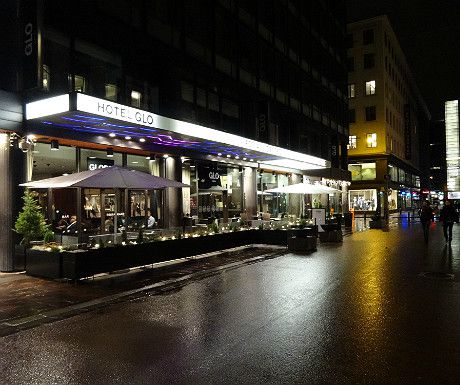
On a recent visit to Helsinki, I stayed at the GLO Hotel Ithaca, a moderately-sized hotel with an excellent city centre location, putting you in easy walking distance of many key sites.
I arrived late at night (in fact, in the early hours of the morning), so please forgive the night-time shot of the exterior which perhaps doesn’t do it justice, blogs Paul Johnson.
The welcome
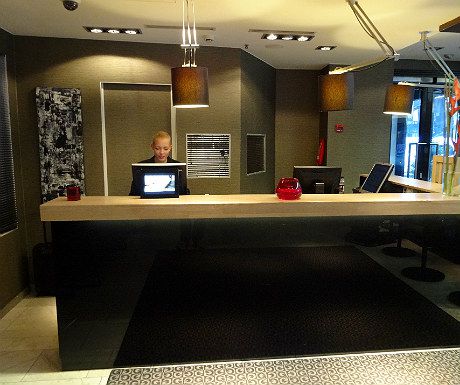
Check-in was a quick and efficient process. Reception also kindly sorted me out with an adaptor as I realised I’d inadvertently brought the wrong one with me.
The room
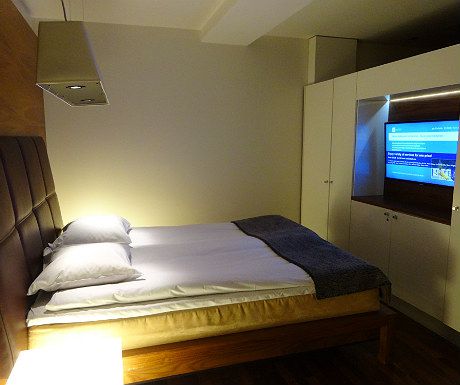
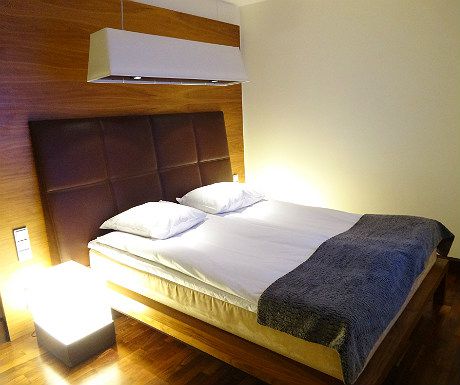
My room was towards the top of the building, on the last but one floor (accessible by lift) – a clean, contemporary room with various shades of brown and beige, and magnolia walls. In addition to the bed that you see in the pictures, there was a small sofa (in front of another TV) and a writing desk.
Sadly there was little in the way of a view to speak of because I wasn’t in a room that faced outwards but that didn’t really bother me as I wasn’t going to be staying in for the hotel for long and, when I was there, I’d be either working or sleeping.
The bathroom
Robes, slippers and toiletries were all provided. There was both a bath (and bath salts supplied daily) and – separately – a lovely, powerful shower, perfect for freshening up.
The facilities

I didn’t eat at the hotel restaurant but did have breakfast there each morning. This was a rather simple affair with hot and cold buffer options, including one or two typically Scandinavian choices. The main downside of breakfast was how busy it was – it didn’t seem to have quite enough seating for everyone, possibly because I was there at peak time and perhaps also, I suspect, because non-residents were also having breakfast there.
I did make use of the gym and spa facilities on the top floor of the building. I had the gym to myself – there are a couple of good running machines in there, complete with a screen hooked up to the internet and with one or two games you can play if you’re able to press buttons and remain steady on your feet at the same time.
The spa includes a couple of small saunas (one Finnish) and various treatment rooms. I had a neck and shoulders massage to relieve a bit of tension in my neck which certainly seemed to help.
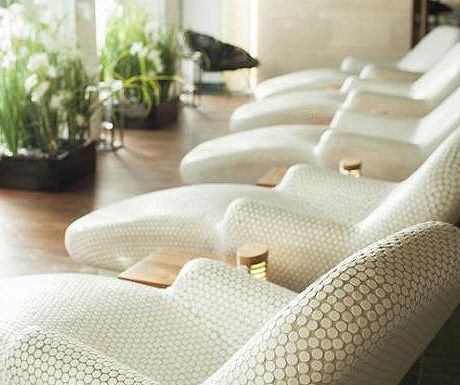
Use of the hotel WiFi was free. Whilst not the fastest connection in the world, it was satisfactory for my needs. There was an option for a faster connection if preferred, but this was extra.
The room had a minibar but be warned… the bar of Fazer chocolate is excellent but difficult to resist!
Other nice touches
Emilia on reception was particularly helpful, sorting me out with directions, restaurant reservations, alarm call, taxi, etc. Nothing was ever too much trouble.
Cost
Double rooms start from 157 euros.
The best bit
Whilst the hotel is fresh and modern, the greatest thing it has going for it is its location, in the heart of Helsinki’s business and restaurant area, and within walking distance of the harbour and many tourist attractions.
The final verdict
A sound and affordable hotel in a central location. A convenient base for my visit and I would certainly stay again.
The best cruise ships for holidays at sea

As experts in the cruise field, we’re often asked for advice about holidaying at sea, but one question that tends to pop up more than any other is ‘what is the best cruise ship?’ an excellent question, but one that is rather difficult for us to answer.
The features and amenities that constitute ‘the best’ vary depending on each individual travellers’ interests and preferences. We’ve all got our favourites, but what’s right for us might not be right for you. Rather than providing a definitive answer, we find it to be more beneficial to suggest some amazing ships that may suit different demographics and passions, blogs Michael Wilson.

For families
If you’re travelling with babies, young children, or teenagers, we think that one of the most important considerations when choosing a ship is what there is to do on board.
While sea days are a great chance for us to gaze out across the horizon, kids can become bored very easily. Depending on the age of your children, look for ships that boast an on board nursery or play area, kid-friendly dining establishments, fun activities, and infants’ splash pools.
Ships to check out
- Royal Caribbean’s Independence of the Seas for the exhilarating H20 Zone Waterpark
- P&O’s Azura for the poolside Sea Screen cinema showing old and new family favourites
- Norwegian Cruise Line’s Breakaway with its incredible waterpark and even the chance to ‘walk the plank’
For couples
If you’re heading off on a romantic getaway, we believe that indulgent luxury should be one of the primary considerations.
Although all ships are truly opulent, there are some that really stand out as excellent options for loved up couples.
Some features to look out for are cozy bars, relaxing spa facilities and beautiful staterooms. Some ships even offer adults only sailing experiences, ensuring a much more intimate holiday.
Ships to check out
- P&O’s Adonia for its adult’s only atmosphere
- Celebrity’s Solstice Class for the stunning AquaClass staterooms
- Azamara Club Cruises for the exceptional on board ambiance
For adventurers
If you’re looking for a different kind of cruise experience – one that visits tiny islands, sails through narrow waterways, and docks in some of the most remote and mysterious destinations in the world – then it’s vital to consider your ship.
For true adventurers, we think that smaller ships are a wonderful option.
Their size means that they are able to travel where other liners cannot, creating a unique and alternative cruise experience.
Ships to check out
- Regent Seven Seas’ Navigator for being one of the most compact luxury liners in existence
- Celebrity’s Celebrity Xpedition for the one-of-a-kind Galapagos Islands itinerary
- Princess’ Island Princess for full length Panama Canal transits

For shopaholics
Whether you simply enjoy a touch of window shopping or are keen to stock up on souvenirs, many of the more modern cruise ships are a shopaholic’s paradise.
In fact, some liners boast rows and rows of designer stores that make the ship more like a luxurious city centre shopping complex than a sea-going vessel.
We think it’s best to look for ships with a good mix of cruise line exclusives and well known brands for the ultimate shopping experience.
Ships to check out
- Cunard’s Queen Victoria for the Harrods store, H. Stern jewellers, and prestigious Clarendon Art
- Celebrity’s Celebrity Millennium for the Innovations Store selling a wide range of electronics
- Princess’ Royal Princess for offering brands such as Lancome, Swarovski, and Clinique
For foodies
Food plays a major part on any cruise, with one of the biggest decisions of the day being whether you eat dinner in the buffet, the dining room, one of the many stunning speciality restaurants on board, or simply order room service to dine in your luxury stateroom.
Many celebrity chefs are now lending their names to fine dining restaurants at sea, creating the perfect blend of two passions for food-loving travellers.
Ships to check out
- P&O’s Ventura for Marco Pierre White’s The White Room for a mouthwatering menu including dishes such as Velouté of Wild Mushrooms and Madeira Cappuccino with Truffle Foam and Mediterranean Prawns and Lobster Tartufi with Saffron Risotto, Green Asparagus and Black Truffle Butter
- Celebrity’s Celebrity Reflection for the one-of-a-kind Qsine restaurant
- Regent Seven Seas’ Mariner for the Prime 7 steakhouse restaurant serving perfect aged beef
For trend setters
If you like to make a statement, stand out, and enjoy amazing experiences before anyone else, then travelling on some of the most recent introductions to the seas is the perfect choice for you.
Cruise ships are becoming bigger, better, and more magnificent than ever before, and there are a whole host of new vessels we can expect to see in the near future.
Ships to check out
However you like to travel, whoever you’re travelling with, and whatever you like to do on holiday, there is a cruise ship that perfectly reflects your interests and personality – it’s just a case of finding it.
With so many great ships sailing the seas today, it is very difficult for us to say with any certainty what the absolute best ship is, but we know there are some truly amazing vessels out there that you’ll just fall in love with and our job is to find not the best overall but the best one for you.
Hotels that make their own liquor & beer

Is there anything actually cooler than drinking specially-distilled gin on a rooftop in Ohio? Or how about a Florida hotel group that brews its own craft beers?
That’s not all. There are also some incredibly beautiful Latin American properties that offer a lot more than just great views. Get a little tipsy in Costa Rica with beer made on site and get in the spirits (get it? ‘spirits’) with tequila—neat or in cocktail form—in Mexico.
AC Hotel Columbus Dublin (Ohio)
Columbus might be considered the Midwest, but its newly opened AC Hotel in Dublin offers up a European flair on its rooftop. With its Spanish-inspired menu, hand-crafted cocktails and panoramic views of the Scioto River, VASO provides something even more unique than its views with a specially-distilled gin made exclusively for use at this Ohio hotel.
The restaurant partnered with local Watershed Distillery to create a new version of their Four Peel Gin that’s light and smooth-bodied, made with Sevilla oranges and Meyer lemons to add a twist to the traditional version of the spirit. This might be the best gin in America, in the most unassuming place. Give it a try and see for yourself!
Tabacón Thermal Resort & Spa (Costa Rica)
Tabacón Thermal Resort & Spa, spread over 900 acres of lush rainforest near the Arenal Volcano and known for its incredible healing hot springs, is maybe the last place you’d expect to find a proprietary craft beer. But in response to a growing craft beer scene in Costa Rica, the hotel has partnered with local brewery 5inco Amigos Cervecería to create a special brew only available at the resort.
Produced in the nearby village of San Carlos, the beer was launched during this past summer’s World Cup and is made with wild flavors and tropical aromas characteristic of the rainforest and resort’s thermal springs.
Guests love the 5.2 percent ABV ‘IPAva’ brew so far and were even treated to a complimentary bottle each time Costa Rica scored a goal during the World Cup.
Marriott Puerto Vallarta Resort & Spa (Mexico)
At the epicenter of tequila culture, you’ll find Marriott Puerto Vallarta Resort & Spa—one of the few resorts in the world that grows its own agave azul on site and produces a proprietary brand of tequila.
The Puerto Vallarta resort’s in-house Tequila Sommelier leads weekly tasting classes for guests as part of the “Secretos de la Familia,” which translates from Spanish to “family secrets,” program to help increase their knowledge of and appreciation for the most famous product of the resort’s home State of Jalisco.
Guests can also visit the new Ceviche & Tequila Bar to enjoy more than 180 different tequilas and 12 kinds of draft beer along with the breathtaking ocean views.
La Casona at Hacienda Patrón (Mexico)
One more in Mexico, but this isn’t your average hotel. In fact, it’s not really a hotel at all. If you ever get a chance to visit the Patron distillery in Atotonilco El Alto, Jalisco, available by invite only, don’t you dare say no!
The stunning Hacienda screams luxury and its super exclusive 20-room Casona guest house confirms it. Rooms here are made for kings and queens with amazing plush beds, incredible artwork, Paul Mitchell products and rainfall showers—some suites have Jacuzzi tubs, too.
The dining room is run by a chef who’s been trained by Thomas Keller and the bar is open until 1 a.m. daily. The best part? If you’ve been invited here, everything is free!
Tour the distillery and experience an ultra-premium tequila tasting. You can also just hang around the bar—cocktails, like the Tequila Old Fashioned, are must-haves., or you can sip the new Gran Patron Smoky (which is similar in taste to mezcal and debuted just a couple weeks ago) neat.
Sandpearl Resort, Opal Sands Resort, Lido Beach Resort (Florida)
OPL Hotels on the west central coast of Florida have got it going on. Not long ago, Sea Dog Brewery in Clearwater Beach partnered with OPL to create Deep Blue Brewing, a line of craft beers and IPAs specially made for the hotel group based in the Sunshine State.
Florida-inspired craft beers are now exclusively available at select properties including Sandpearl Resort and Opal Sands Resort, both in Clearwater Beach, and Lido Beach Resort in Sarasota. Top picks are the OPAL Tangerine Wheat Beer, which delivers a refreshing wheat malt flavor with a splash of tangerine, and the OPAL IPA, a medium body IPA perfectly blended with hints of citrus—both perfect for sipping beach or poolside.
Best places to ski in Canada

Canada offers an array of sensational ski destinations and the country’s flag carrier can take you there. Air Canada boasts an impressive fleet flying to dozens of cities across North America, connecting winter travelers to their favorite ski resorts. Here are five of the best places in Canada to strap in this winter:
Whistler Blackcomb, British Columbia
Perhaps Canada’s most renowned ski resort, Whistler Blackcomb is just a 90-minute drive north of Vancouver and travelers flying with Air Canada can save big on winter flights from destinations all across the continent, including as little as $113 one-way from Los Angeles.
Banff, Alberta
Banff is home to thousands of acres of skiable terrain, including three incredible hills in Sunshine Village, Mt. Norquay, and Lake Louise. Experience each of them for yourself this winter by flying into nearby Calgary with Air Canada.
Banff National Park is about an hour and a half west of the cosmopolitan city.
Mont-Tremblant, Quebec
Located just 90 minutes northwest of Montreal, Mont-Tremblant is yet another tremendous ski destination for visitors to Canada this winter.
Guests at the namesake ski resort can even take advantage of direct flights with Air Canada between Toronto Pearson and Mont-Tremblant International Airport during the winter.
Collingwood, Ontario
Air Canada makes it easier than ever to fly to Toronto without blowing up your budget. Better yet, visitors to the Canadian metropolis will be just a two hours’ drive from Collingwood, home of the beloved Blue Mountain ski resort.
This year-round resort offers a variety of terrain and slopes that will suit skiers of all skill levels and it also boasts one of the longest seasons in Ontario.
Martock, Nova Scotia
Fly into Halifax this winter and you’ll be less than an hour from Martock. The mountain stretches 600 feet high and features as many as seven trails.
Air Canada passengers can book a one-way ticket from Orlando to Halifax for just $130 this winter.
How Proper Hotel San Francisco became the city’s hippest hotel

As most of you already know, the charms of San Francisco are aplenty. Breathtaking scenery? Check. Cultural attractions? Check. Noteworthy restaurants and bars? Check. And with last year’s opening of Proper Hotel San Francisco, The Golden City finally got the design-driven boutique hotel it needed (and deserved). Below, all the reasons why you should make Proper your home base when visiting the Bay Area.
Background in Brief
Opened in September 2017, this boutique hotel occupies a historic flatiron building perched at Seventh and Market in Mid-Market. Co-founded by Brad Korzen, Brian De Lowe, and Alex Samek, Proper Hospitality unveiled its first project in June 2016 with Hollywood’s Proper Residences, then followed up with its first hotel in San Francisco. (Hotels in Los Angeles, Santa Monica, and Austin are in line to open later this year, and early next.) Though each property celebrates the unique personality of its respective city, what they have in common is relatable luxury, hip amenities, and a striking look masterminded by famed interior designer Kelly Wearstler. From the moment you enter the lobby – which multitasks as a reception area, work space, and lounge – and are greeted with an eclectic (yet cozy) mishmash of artwork, furnishings, and preserved original details (the lobby marble, for example, is over 80 years old ) you get a sense of what Proper is all about: bringing together the old and new, to create a vibe that’s fresh and of-the-moment – yet rooted in history.

Accommodations
Practically every inch and corner of the 131 guest rooms has been thoughtfully considered by Wearstler. To that end, you’ll discover a vibrant juxtaposition of colors, textures, even wallpapers, that in true Wearstler fashion – work together for a wholly original effect. So instead of a hotel, you feel like you’re a guest at someone’s impossibly chic abode. Luxe accents abound, as evidenced by the plush Aireloom mattresses, Aesop bathroom amenities, and Nordic Vifa speakers. Hotel San Francisco’s even the robes are a surprising touch. Being short, I find standard ones bulky, cumbersome, and long, but Proper’s versions are fashioned from a lightweight black-and-white cotton you tie like a kimono. (They’re so stylish, they can be worn in public.) While working in hotels is a necessity given my line of work, I appreciated that instead of a standard desk, I had a versatile window side table that served as a spot for snacking, writing, and chilling out.

Paris’s Left Bank has a new grand hotel
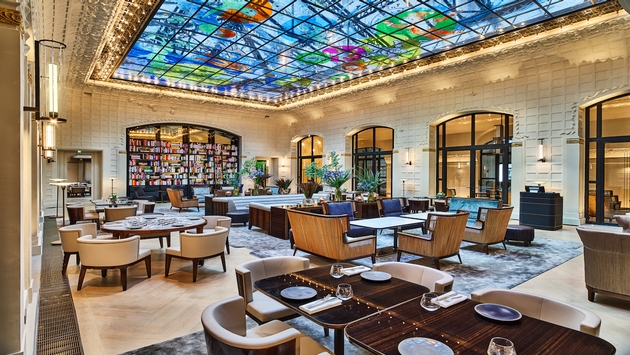
The Hotel Lutetia is the newest grand luxury hotel on Paris‘s Left Bank. It’s actually Grand Hotel in Paris’s Left Bank, and it first opened over a century ago.
The hotel, which is named after the original Roman settlement on the banks of the Seine, reopened on July 12 after a complete closure and re-imagining. The refresh took four years to restore and renew the vintage Beaux Arts-era building to pay homage to its original design, with amenities and interior furnishings to suit the contemporary traveler.
The reimagined hotel will have 184 rooms, 47 of which will be suites. Prior to the renovation, the hotel had 233 rooms, which allowed the designers to incorporate larger rooms. In Paris, where hotel rooms are famously petite, this is an easy luxury point of distinction. At least two of the suites will have private terraces with 360-degree views of the city.
Grand Hotel in Paris’s Guest rooms are redone with polished oak floors and are configured to take advantage of natural light. When illumination is required, hand-blown Murano glass features in the lighting fixtures. Bathrooms get their share of natural light, which illuminates white Carrara marble and bath amenities from Paris luxury retailer Hermès.
Self-care seekers can take advantage of the Akasha Holistic Wellbeing Center, a brand introduced to the Lutetia from The Set’s other hotel locations. There are six treatment rooms, steam room, sauna, whirlpool, fitness room, and a 55-foot swimming pool (a rarity for Paris hotels) taking advantage of the same natural light as the guest rooms.
Hotel Lutetia also sets out to retake a position in the community with an impressive number of dining and drinking outlets. The Michelin three-starred chef Gérald Passedat is at the helm of Lutetia Brasserie. Guests wishing to pay homage to celebrated habituée and frequent guest Josephine Baker can do so at Bar Josephine, while those wishing to see the historic and lovingly restored glass roof can do so at Salon Saint Germain, which is a bright, airy space with a new art deco patio for al fresco diners. Breakfast is taken in the high ceilinged, clean lined art deco L’Orangerie, while cigars and brandy habituate Bar Aristide, fronting the Rue de Babylone.
When this Grand Hotel in Parisfirst opened in 1910, it was built and operated by the owners of the nearby Le Bon Marché department store. The first guests were well-heeled provincial guests who would visit the city to provision their chateaux outside of Paris, in addition to a growing coterie of international visitors who would come to the city to export fashion from the famous department store. Beds and bedrooms of the period were generally smaller, and bathrooms were shared, even in accommodations for the ultra rich.
Later in the century, as the Left Bank became a haven for writers and artists, James Joyce is purported to have written Ulysses while in residence, seeking occasional edits from Ernest Hemingway, who also frequented the hotel. Picasso and Matisse were also known to be frequent residents or patrons. The building was requisitioned by the German Army for administrative purposes during the Second World War, and at the order of General de Gaulle was used as staging for repatriation of prisoners of war and displaced persons after liberation by the Allies.
Operated as a luxury hotel by the Champagne magnates Taittinger through most of the 20th Century, the hotel closed in 2014 and has reopened as part of The Set Hotels, which is growing a collection of grand European hotels. Other group hotels include London’s Hotel Café Royal and The Conservatorium in Amsterdam. The hotel is also a member of The Leading Hotels of the World.
General Manager Jean-Luc Cousty, who oversaw preparation of the hotel for closure and renovation, and now returns to the hotel explains, “For decades Lutetia has been the living room of the Left Bank and soon the hotel, the Brasserie, and all our beautiful restaurants and bars will once again welcome the beau monde of Paris and the world.”
Now, almost 118 years after the hotel first opened, it has been reset and refitted, ready to welcome the next generation of guests to the City of Light.
Things to do in Tampa with the kids
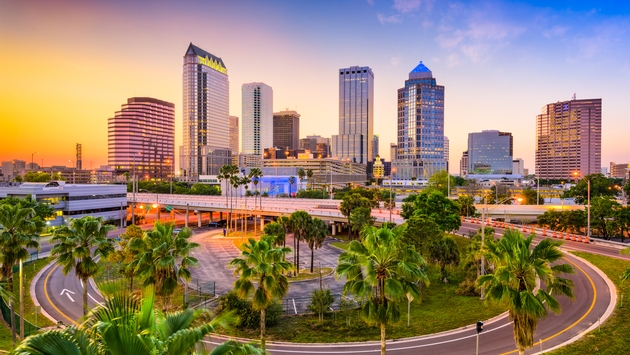
When visiting destinations along the Gulf Coast of Florida, you expect laid-back beach towns that offer their gorgeous white sand beaches as the main attraction and not much else. After spending a few days in Tampa Bay with my family, however, I realized that this is no sleepy coastal town. Tampa is one of those rare cities that strikes the balance of family-friendly and cosmopolitan. It values art and culture as much as recreation and relaxation. Things to do in Tampa with kids.
What makes Tampa such a great destination for families is that there is something for everyone to enjoy. You’ll find theme parks, zoos, aquariums, scenic waterways, splash pads, parks, vibrant nightlife, professional sports, museums, theater and water activities. No matter what interests you or your kids, Tampa’s got it!
Here are some things to do in Tampa with kids. You won’t be disappointed!
ZooTampa at Lowry Park
When you have kids, you end up going to a lot of zoos. Usually, it’s not the most exciting experience. You walk in, you see some animals and you leave. ZooTampa at Lowry Park, however, really stood out to me as an experience that goes above and beyond the average.
As a parent of 3 kids 5 and under, I was delighted to find that there were so many rides available for toddlers and preschoolers at no extra cost. An entire section of the zoo called the Wallaroo Station is dedicated to family fun. There are rides, a petting zoo, a splash pad, dining and a wallaby walkabout.
Throughout the rest of the zoo, you’ll discover a carousel, up-close animal encounters, wildlife habitats and even a safari.
The Florida Aquarium
This top-rated aquarium allows kids to really get involved as they learn about marine life. Kids ages 6 and up have the opportunity to snorkel with the fishes in a shallow water coral reef, while kids ages 9 and up can snorkel with sharks, stingrays and more. The aquarium records the experience on video as a keepsake for guests.
Even if your family isn’t daring enough to hop in the water, you can still marvel at the octopus, sharks, jellyfish and more. My kids loved watching people scuba dive and were entranced by the sharks. There are lots of other opportunities for interaction, including touch tanks, behind-the-scenes tours, a dolphin cruise and a splash pad.
Busch Gardens
Busch Gardens is an African-themed amusement park with thrilling roller coasters, animal attractions, a safari and exciting shows. If you’re going with young children head directly to the Sesame Street Safari of Fun section of the park. Our 5-year-old was so excited about the live show with Elmo, while our 2-year-old was thrilled to be able to go on kid-friendly rides. Both of them loved exploring the canopy walk and climbing nets on the Treetop Trails.
For families with older kids, there are plenty of rides that offer a bit more excitement. Enjoy a bird’s eye view of the park from the Skyride cable car, cool off on the Congo River Rapids or put your bravery to the test on the Sheikra 200-foot-tall roller coaster. Adults can even stop at the Garden Gate Cafe for free beer samples this summer.
Tampa RiverWalk
One of my absolute favorite spots in Tampa Bay was the Tampa Riverwalk. The 2.4-mile promenade borders the Hillsborough River and is brimming with museums, parks, restaurants and more. It’s a beautiful spot to spend a few hours strolling with your family while admiring the scenic waterway.
Armature Works
Have you ever tried to eat at a fancy restaurant with little kids? It’s stressful, to say the least. That’s why Armature Works is the perfect spot to eat for families. Heights Public Market within the Armature Works building offers multiple eateries so that even the pickiest eater in your brood will find something to their liking.
Kids with lots of energy will blend right in thanks to the communal seating and lively atmosphere. There’s even outdoor seating with loads of yard games and a life-size chess set for entertainment. Don’t worry, Mom and Dad: there’s ice cream for the little ones and a cocktail emporium for you. What better way to spend an evening than enjoying good food, a beautiful breeze coming off the river and an unimpeded view of the city skyline.
Water Works Park
Grab a to-go cup from Armature Works or Ulele, the restaurant right next door, and walk over to Water Works Park so the kids can splash and play while you relax. This waterfront park has both a splash pad and a playground and is located on the banks of the Hillsborough River. Kids will love the giant bucket that dumps water intermittently onto the splash pad from above. There are plenty of shaded picnic tables for adults, and restrooms with showers for afterward.
Pirate Water Taxi
Yo ho ho! The Pirate Water Taxi is an entertaining way to get around the city. The crew is friendly and shares tidbits of Tampa Bay’s history while you float along the Hillsborough River. It’s a hop-on-hop-off taxi, so you can pick which destinations you want to see and plan your trip accordingly. Stops include parks, Glazer’s Children’s Museum, splash pads, a pirate ship and even an escape room!
Where to Stay
While there are many wonderful hotels in Tampa Bay, our family found the Hilton St. Petersburg Carillon Park to be a peaceful haven after an action-packed day of exploring. Located just 20 minutes from downtown Tampa, this hotel offered the most heavenly heated outdoor pool where we relaxed and played each evening. The spacious rooms and comfortable beds made the Hilton St. Petersburg Carillon Park the perfect home base during our trip.
The St. Petersburg location is great because it’s central to downtown Tampa, the beaches and more destinations in St. Petersburg and Clearwater, but if you’re looking to stay closer to the action, the Hilton Tampa Downtown offers many of the same amenities plus a rooftop pool and proximity to the Riverwalk.
The benefit of staying at a Hilton this July through September is their Best of Tampa Bay program. They have partnered with many of the destinations in Tampa to offer discounts on outings like ZooTampa at Lowry Park, the Pirate Water Taxi, several boat tours and cruises, the Tampa Bay Food Tour, William Dean Chocolates and so much more.
Florida residents looking for a getaway close to home will even receive discounts up to 12% on their stay at Hilton by booking directly on their website. All of these discounts combined make Tampa Bay the perfect summer destination to explore more of your own state.
Thats it for things to do in Tampa with kids.
For More Tampa Details See- Tampa Details
Allston hotel features local artists’ work throughout 117-rooms
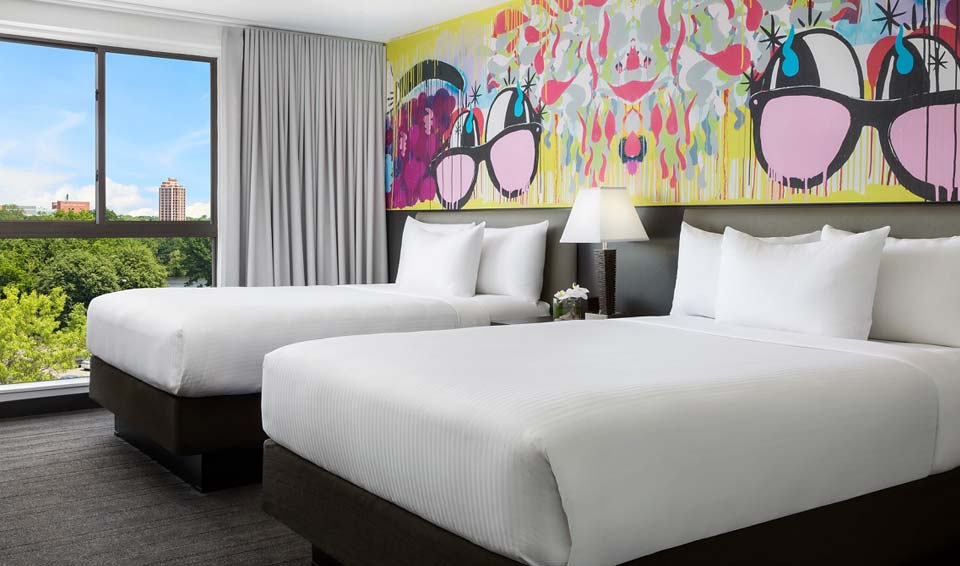
The 117-room boutique hotel Studio Allston has opened at 1234 Soldiers Field Road in Allston, right along the Charles River. The inn features an unusual and colorful concept: A thematic use of art from local creators that runs through its lobby, bar, meeting rooms, suites, and rooms.
The forces behind the concept—including developers the Davis Cos., Highgate, and Spot On Ventures as well as creative advisory firm Isenberg Projects—selected 12 contemporary artists to create murals in each guest room. Five of the hotel’s 10 guest suites were designed as “unique, immersive works of art,” according to a release.
Studio Allston is the product of a conversion of a building dating from the 1960s and reflects ongoing changes in the area, not least those that Harvard is driving on its Boston land.
“We view the Studio Allston project as an exciting opportunity to make a meaningful, positive contribution to the continued evolution of Allston’s Western Avenue corridor, one of the most dynamic development markets in greater Boston,” Stephen Davis, an executive at the Davis Cos., said in the release.
The hotel plans to announce the addition of a restaurant this summer. Rooms at Studio Allston start at just under $200 a night.
Things To Do in Whistler, Canada

Set out on a self-propelled Nordic adventure in Whistler this winter. With more than 160 kilometres of trails to discover, Whistler’s cross-country scene serves up options for everyone from first-timers to seasoned professionals.
Lost Lake Park

Lost Lake Park features more than 30 kilometres of cross-country trails just minutes from Whistler Village. Enjoy easy access to freshly groomed trails from 8 a.m. to 8 p.m. until the season’s end in early April. Start your journey at the Lost Lake PassivHaus where lessons, rentals and gourmet coffee are all available.
Whistler Olympic Park

Relive the magic of the 2010 Olympic and Paralympic Games with a visit to the Whistler Olympic Park. Try classic or skate skiing on more than 90 kilometres of well-groomed trail with 30 km available for when you’d like to bring the dog along. Make a midweek visit to the Olympic Park when rentals, tickets and meals are available for $5 each on for Wednesdays from 3 – 9 p.m.
Callaghan Country

For a unique adventure on 87 kilometres of groomed and track-set Nordic ski trails head to Callaghan Country. Make it an extended adventure with an overnight trip to Journeyman Lodge, a full-service chalet in the backcountry complete with hot showers and a wood-fire sauna. Snowshoeing and backcountry ski touring facilities are also available from Callaghan Country.
Sigge’s P’ayakentsut Cross Country Ski Event

Participate in the largest cross country event in BC when the Sigge’s P’ayakentsut Cross Country Ski Event returns to the Whistler Olympic Park on February 25 and 26. This inclusive event welcomes all ages and abilities to participate in 15 km, 30 km or 50 km courses as well as a 10 km route sit-ski participants. Learn what a loppet is this Saturday, February 25 and the cheer on the youngsters in the kids Payak Mini (complete with cookie medals) on Sunday, February 26.
Cheer on the athletes in the North American Cup as it makes its first ever stop in Whistler. Witness the best young biathaletes in competition from March 3 to 5 at the Whistler Olympic Park.
Best Spots for a Beer in Asheville, North Carolina

Beer drinkers unite and make your way to Asheville, North Carolina as soon as you can.
With the most breweries per capita, Asheville is indeed the brewery capital of America. There’s a brewery seemingly everywhere you turn in some downtown areas. It truly is a beer lover’s paradise.
And while there are far too many to knock out in a single day, travelers can still easily make it anywhere from seven to 10 breweries in one weekend. (Yes, some may attempt to reach that many on Saturday alone since it’s a popular destination for bachelor and bachelorette parties.)
This past weekend, I had the pleasure of visiting to celebrate a friend’s bachelor party, and we managed to hit five breweries within seven hours.
Factoring in the atmosphere, location, prices and beer options, here are some of the best breweries in Asheville.
The Downtown Brewery Triangle
This chunk of downtown is the go-to spot if your goal is to try as many breweries as possible.
From Lexington Avenue on down to Collier Street, there are over 10 breweries all within easy walking distance from each other. Depending on which ones you visit, you could walk 10 to 12 minutes (at most) to your next stop, while others are as close as a 60-second, leisurely stroll around the corner. Also referred to as the South Slope Brewery District, you can pay by the beer (three to five dollars) at most breweries.
The best of the best in this location include:
1. Wicked Weed

The full brewery is now out in West Asheville, but the downtown location is where it all started. What was once a hardware store basement is now arguably the most popular brewery in downtown.
Try the Orange Peel Ale (5.5 percent ABV), a nod to Wicked Weed’s music venue neighbor: The Orange Peel. Or try the Freak of Nature (8.6 percent ABV) if you like an IPA-style beer. Richard Bibb, noted IPA fan and groom on our excursion, said: “it’s one of the best IPAs I’ve ever had.”
For those in favor of a good sour beer, there are a few options here, but you’ll find plenty more by taking an eight-minute walk over to Funkatorium, which is a taproom owned by Wicked Weed and fully dedicated to sour and funky beers.
2. Catawba Brewing

The White Zombie Ale (5.1 percent ABV) is a popular year-round brew here, but this past weekend Catawba released their new Peanut Butter Jelly Time (5.7 percent ABV).
It hits with you a strong peanut smell right away before even tasting. It was a bit heavier than I expected, but the hint of raspberry puree really delivers to make this a solid beer.
3. Burial Beer Co

The outdoor area really steals the show thanks to the brewery’s corner location and the old ford truck that has become a popular photo spot. Sit back and enjoy great beer, great company and a great view.
The taps can change frequently, so make sure to check ahead of time on their taproom page if you’re looking to try a specific beer. (Waves Crash Upon Us – Brett Pale (5.8 percent ABV) was my favorite, but it’s off today’s listed tap, for example.) It will surely be back, though.
If you’re in the spirit of trying new things, sample the quail or bone marrow from the Salt & Smoke food truck.
4. Green Man Brewery

What began as a brewpub has now grown into a much larger facility. The third-floor patio here offers an awesome view of Asheville’s south side.
If you’re into heavier beers likes stouts and IPAs, this is definitely the place for you.
Of course, they do have some beers under six percent ABV, like the award-winning ESB amber ale (5.5 percent ABV). But most are here for the brews with higher alcohol content, such as the Trickster IPA (7 percent ABV) and The Dweller (10 percent ABV).
5. Sierra Nevada Brewing Co.

This massive estate will take your breath away the minute you pull past its gates.
If you only have a day to visit Asheville breweries, Sierra Nevada needs to be on your list. A great place for a brewery tour given how large it is, I recommend starting your day here before venturing to the downtown breweries (you can walk to those but have to drive to this one).
Located about 20 minutes outside of downtown, the Taproom opens at 11 am on Saturday and gets crowded all day. Thankfully, there’s a ton of room for everyone: Even if you are in a big party and have to wait 45 minutes to an hour for a table, you can grab a beer at the bar inside or the one outside.
Try the Nooner Pilsner if you’re into German-style beers. For more hops, try the Tropical Torpedo, which you can’t get anywhere else but here until the fall.
This is also an ideal spot for a Saturday lunch outing: You can order food from the Back Porch menu if you don’t feel like waiting for a table, but the best thing you can put in your mouth at Sierra Nevada is the crispy pork belly on the Taproom menu inside.
Other Options
New Belgium Brewing was one popular spot we weren’t able to make on our brewery extravaganza. Given there are a plethora of options in the city, there just wasn’t enough time in the day for a stop here.
But rest assured, I’ll be back and plan to visit, as well as Highland Brewery Company, which locals I ran into during my trip raved so much about.
To my beer peers who only drink cider style, you’ll want to visit Noble Cider and Urban Orchard Cider Company.
As always, please drink responsibly. Don’t drink and drive. Asheville has taxis as well as Uber and Lyft ride services to move you around the city. As previously mentioned, once you get downtown, you can easily walk to many breweries.
Things To Do in Mexico City

If you happen to look out your window as your plane begins its descent into Mexico City, you’ll probably feel overwhelmed by the sheer expanse of it. With 16 boroughs, this 573-square-mile, elephantine city looks like an endless sprawl from above.
And it doesn’t feel any less intense on the ground.
Mexico City is brimming with vibrant neighborhoods you’ll fall in love with, each with its own trove of unforgettable attractions, experiences and quirks. A year isn’t enough to explore this aesthetically, culturally and gastronomically effervescent city, let alone a week’s vacation.
There are, however, a few basic sites to start with if you’re visiting for the first time.
Metropolitan Cathedral and Zócalo

Strolling up and down the cobblestone streets of the Centro Historico is essential, even if it is the most touristy part of the city.
Make your way to Zocalo, the Main Square, and ponder the fact that, before it housed all those grand Spanish colonial structures, it used to be the center of the ancient Aztec capital of Tenochtitlan.
There are five important buildings that border the square, including the National Palace. The most stunning of them, however, is the Metropolitan Cathedral, whose magnificent Baroque façade is just as awe-inspiring as its elaborate interiors. While there, take the time to admire its majestic organ and go on the next tour up the bell tower.
Palacio de Bellas Artes and Alameda Central

While in the Centro Historico, you’ll be hard-pressed to miss the delicate-yet-imposing dome of Palacio de Bellas Artes. The cultural center is one of Mexico City’s most notable landmarks and an exquisite combination of Art Nouveau architecture and Art Deco interior design.
It’s irresistibly beautiful, especially early in the daytime before the crowds arrive.
Afterward, walk around the neighboring Alameda Central. Splendid fountains and outdoor sculptures abound in this tranquil area of green space at the middle of the city. Slip into a quiet and lazy rhythm here, perhaps with a cup of morning coffee from nearby Maison Keyser.
Xochimilco and its Canals

As one of the oldest boroughs in Mexico City—and one of the few remaining ones in the city where old traditions are preserved and still celebrated—it’s not hard to find a reason to visit Xochimilco.
However, many come here primarily to ride a trajinera.
While it might sound a tad too kitschy for some, meandering along the old canals of Xochimilco on a traditional trajinera has its charms. Along the way, you’ll see blooming gardens, “floating” houses and boat vendors selling drinks, chips and roasted corn. Pack a feast, rent a trajinera by the hour and, with a glass of cerveza in your hand, allow yourself to soak in the slow pace.
Museo Frida Kahlo and Coyoacan

Few Mexican artists are as prominent as Frida Kahlo, who is iconic just as much for her fascinating work as her avant-garde style. A visit to her charming, yet humble home-turned-museum is a must for any Mexico City vacation. Set in Coyoacan, the Frida Kahlo Museum is as educational as it is full of Instagrammable spots.
Next, take some time to explore the neighborhood. There’s so much to love about colorful Coyoacan, where modest, Spanish colonial houses—painted vibrantly—are decorated with flowering bougainvillea, impressive doors and cool street art. See the inside of Parroquia San Juan Bautista and pop into Café El Jarocho for a cup of blended cappuccimocha.
Local Food

More than anything else, Mexico City is known for its dynamic and formidable culinary scene. It’s home to many amazing restaurants that serve creative, modern takes on classic fare as well as great spots for traditional Mexican cuisine.
Places to consider include upscale Quintonil in the neighborhood of Polanco, Corazon de Maguey in Coyoacan, and Dulce Patria, which makes the most elaborate dishes you’ll ever feast on.
Moroccan restaurants not to miss in Marrakech

As a bustling city that blurs the boundaries between modern metropolis and historic culture, Marrakech boasts an exceptional wealth of culinary delights, to out-do even the most discerning of palates.
From traditional Morrocan cuisine refined with modern style, to cosmopolitan menus that reflect the multitude of international influences that have come through the country, Marrakech is filled with some truly unmissable eateries, catering to virtually every taste and budget, blogs Stéphane Abtan. Here are 5 of the city’s very best:
Charming, friendly and cosy, Al Fassia offers a wonderfully relaxed dining experience that brings together expertly crafted cuisine, with the easy familiarity of a home-cooked meal, and is run exclusively by women. Without the restrictions of a fixed menu, this restaurant is perfect for both first-timers wishing to dip into Moroccan food, and experienced diners looking for something a little more individual on the plate. Enjoy fresh, local flavours and the incredibly fragrant baked delights that are the restaurant’s speciality.
Billed as the best Moroccan restaurant in Marrakech by many, La Mamounia covers a spectrum of culinary styles in the elegant space of the restaurant, while managing to maintain individuality and refinement throughout. Mamounia also offers a uniquely Moroccan take on Sunday brunch, where tagines and locally caught seafood share a table with exquisite patisseries and champagne. However you choose to dine – there is one thing that remains the same – the subtle hint of glamour and elegance throughout, that makes La Mamounia so memorable.
For foodies who love to recreate the flavours they’ve enjoyed elsewhere themselves, La Maison Arabe offers a one of a kind opportunity. An elegantly presented restaurant that offers fine dining without diluting any of the wealth of Moroccan culture, La Maison Arabe also lets diners enjoy a sneak peak at the secrets that lie behind the country’s most tantalising local delicacies and dishes. Cooking workshops put budding chefs through their paces, led by a local dada, a traditional Moroccan cook. But for those who don’t fancy cooking, they can simply take in the evocative atmosphere of serenading Andalusian musicians and a flower-filled patio garden, all illuminated by a glorious zouaké hand painted ceiling.
Drawing on Marrakech’s illustrious heritage as a mainstay during the golden age of Hollywood, Le Salamatakes you back to an era that Humphrey Bogart would feel perfectly comfortable in. The combination of classical geometric Morrocan décor and contemporary European styles blend seamlessly, and is reflected in the varied menu too. Don’t miss a chance to dine on the rooftop terrace, where you can take in some incredible sights, especially the spectacular desert sunsets that illuminate the evening sky.
Right in the heart of the bustling medina, this romantic enclave offers the perfect spot to enjoy a delicious meal while soaking up the sophisticated atmosphere. Interweaving Italian and Moroccan cuisine, expect dazzlingly fresh flavours and excellent presentation. Choose from both Italian and Moroccan mains that take advantage of the local seafood and wealth of produce, as well as a refreshingly urbane wine list to satisfy contemporary palates. And with stylish and chic open-air terraces from which to take in the stunning views, this restaurant succeeds in balancing style with great taste in every aspect of its experience.
The best luxury ski resorts in Switzerland

Switzerland is well renowned as a unique skiing destination. It has strong influences from its French, Italian, German and Austrian neighbours, yet retains its own distinctive identity.
Geographically breathtaking, with the Alps, rivers and glaciers, Switzerland is stunningly beautiful. It is one of the richest countries in the world, and it pays to have a little change in your pocket to ski here. It is well worth it however for many reasons. The skiing is excellent, the environment magnificent and the cuisine is seriously good.
Think of Switzerland and you think of the cheese, chocolates, cow bells, the Matterhorn, Heidi, Alps, high end shopping, class and sophistication, and that is just a start. Choosing a resort for skiing and après life is difficult, but inevitably rewarding. Here are some of Switzerland’s most luxurious ski resorts.
Gstaad
“Come up, slow down” is how Gstaad markets itself. This resort village has some 144 pistes that cater for all levels of ability. It is a haven for skiers and snowboarders alike. From Gstaad you have access to 6 other resorts that will keep you busy and where you can select a terrain best suited to your needs. Cross country skiers are well catered for and will be enthralled exploring 80kms of trails.
The village of Gstaad itself is a picture postcard perfect Alpine village. Here you will see archetypal alpine houses, flower box windows, a river running through the village and all surrounded by snow capped mountains.
Gstaadt is renowned as a resort for the rich and famous, though it is a viable option for all. There are some beautiful hotels and guest houses that treat you well after a hard day on the slopes, or indeed a day doing many of the other activities on offer here.
Perhaps you might like to play 9 holes of golf on the snow, go horse riding or husky sledding. Heli skiing and hot air ballooning are also on offer. If you enjoy shopping, Gstaadt has some delightful boutiques and local craft shops that are well worth a visit.
Gstaadt is accessible from Geneva, which is about 2 and half hours away, with Zurich being 3 hours and Bern the closest at 1 hour and 40 minutes. It is highly recommended, as it is not overly inundated by tourists. An interesting trivial fact is that Bollywood loves Gstaadt and indeed Switzerland, and have filmed many blockbusters here.
Verbier
The French speaking Swiss really embrace Verbier as a ski destination, as do many international visitors because it is a charming resort. Verbier offers excellent skiing and a particularly vibrant après scene. It is located in the 4 Valleys ski region and has over 400km of piste. The skiing in Verbier can be very challenging and is a mecca for snow boarders and hard core skiers. However it is also linked to Veyonnaz, Thyon and Nendaz, which are a little more forgiving. You can also heli ski and glacier walk to supplement your adrenalin rush.
Verbier is recognized for its lively après scene, with many opportunities to enjoy the fruits of your labour after a hard day. The region offers some excellent dining opportunities with Michelin and Gault Millau restaurant here, as well as many local and very good restaurants both on and off the slopes. There are many high end chalets and hotels here to accommodate to your needs. Wellness and spa facilities are a prime concern in Switzerland, and this works for all of us.
Zermatt
Think Matterhorn, think Zermatt. It is claimed that “in Zermatt, après ski begins at noon”. This is the ethos that surrounds this very famous village. Yes, the skiing is good, in fact very good, but so is the relaxed approach to life. Zermatt is a very attractive village, with no motorized cars as these were banned. The architecture is quite typically alpine and befits the beauty of this area. You can see life go on as normal in this very popular town, with farmers going about their duties near to hotels. The sound of the cowbells is excellent.
Zermatt is the highest ski resort in the Alps, and it is nearly always sunny in Zermatt. This resort is particularly good for advanced and intermediate skiers. Some excellent long runs can be done and are not too difficult. The longest run is the Klein to Zermatt, which is 13kms long. If a little daunted, there are so many other activities to do.
The main street, the Bahnofstrasse, offers many shopping opportunities, galleries, indoor pools and ice skating rinks. Take a sleigh ride through the village or try you hand at curling.
A bonus of Zermatt is that you can ski to Cervinia in Italy for lunch and then return for the start of the early après festivities.
The nearest airports are Geneva and Zurich, followed by a delightful train ride to the village.
Klosters
For kings and commoners! Klosters and its neighbor Davos have long been the playground of royalty and the obscenely wealthy. Yet, Klosters and Davos are also accessible to commoners, at a price. The skiing is awesome in both areas, but Davos is certainly the snowboard kingdom hosting some significant international events. There is a 17km run here that is one of the longest in Europe. There are 97 pistes and 33 lifts in operation at Klosters with 50kms of trails for cross country skiers. The skiing particularly suits advanced and intermediates though there are some slopes for beginners.
Klosters a small village surrounded by majestic mountains, and was originally founded by a monk who established his “cloister” here. Renowned for its elegance and glamour, it deserves its international reputation, as it is smaller and more intimate than some others. This is a celebrity haven in a quiet little village that allows people constantly in the spotlight to have some time out. The locals respect this, as I am sure that all visitors would or should.
The closest airport to Klosters is Zurich, about 2 hours and 20 minutes away.
 St Moritz
St Moritz
We have all heard about St Moritz and we all associate it as luxury personified. And no one will be disappointed. St Moritz is again, another sunny little enclave, which has an Austrian feel to it. It is again a celebrity haven, and such is the repute that the name St Moritz is a registered trademark.
St Moritz was originally a health retreat because of the benefits of the mountain air and the natural springs, and this wellness continues today. In 1928 and 1948 it held the Winter Olympic games, the only ones to be held in Switzerland. St Moritz has certainly attracted some notable people, and still does.
The resort is excellent for skiing, a little lazing in the sun and taking some awesome photos. Having 350kms of pistes both skiers and boarders are well catered for at all levels. Corviglia above St Moritz is very popular while Sils Maria and Pontresina give advanced skiers and boarders something to work on.
St Moritz oozes charm and style and glamour. You can ski, shop, choose different Champagne each day, and enjoy the sumptuous dining that befits this chic resort. A nice little sideline is playing ice polo or ice cricket on a frozen lake. Zurich is 2 and a half hours away.
Engelberg
Engelberg is flying under the radar. It is very popular with locals, but it has yet to register with the international audience. Just an hour from Zurich, Engelberg is home to Mt Titlis where the first revolving cable car was introduced and the popular Ice Flyer shows the glaciers brilliantly.
Skiing at Engelberg is an advanced skiers dream come true, as the pistes are highly challenging. Hard core skiers and boarders will revel in the dramatic drops. Many ski jumping competitions take place here. Nearby Brunni is better suited for those not quite so daring.
Engelberg is yet to realize its potential and to provide all of the infrastructures that visitors want and need. However the skiing is superb and the location excellent, so the opportunities are immense. I predict that this little monastic town will reach new heights on people’s ski agenda.
In conclusion, Switzerland is a destination on everyone’s agenda and is a destination that will not disappoint. It is worth it.
How airline food is changing
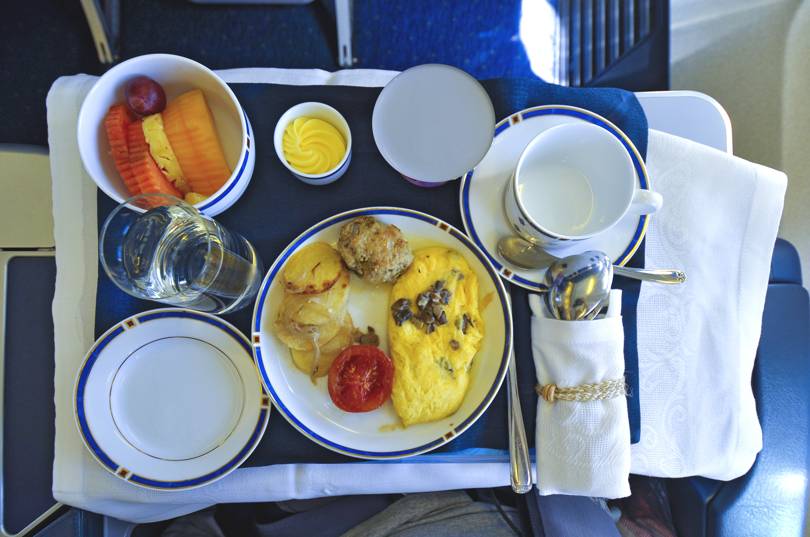
Airline food has never had a good reputation – and there are plenty of reasons why. When cruising at 30,000 feet there are scores of regulations governing all aspects of flight, no matter what class you’re flying in. But while the regulations remain, the inventiveness of sky-high cuisine is experiencing something of a revolution.
“There’s going to be a lot more nutritious food,” says Gerard Bertholon, the chief strategy officer of Cuisine Solutions, which provides food for international airlines. “They [airlines] have been focussing on comfort food, big portions, and not looking too much at the ingredients.”
Which helps to explain why your in-flight meal is often more functional than flavorsome. Throw in the added pressures of a lack of space, the complexities of cooking at altitude, and the sheer logistical difficulties of getting food supplies and meals to the right flights. But gradually, over the years, the food being served on planes has been improving. And the next step is likely to include more personalization for those flying.
“They always had special meals but it was just vegetarian,” Bertholon says. “Now we’re focussing much more on customers, who are demanding more.” This includes giving passengers more information about where meat has come from, using organic ingredients and more options.
It’s all part of a shift to make airline food more like what we eat on the ground. To this end, Cuisine Solutions has been one of the companies encouraging airlines to use the sous-vide cooking process for its food. The system involves sealing food in airtight plastic bags and cooking it in a bath of water that’s heated to an exact temperature.
Bruno Goussault, who invented the modern sous-vide method and is the chief scientist at Cuisine Solutions, says this is ideal for airlines. At 30,000 feet a lack of air humidity in airline cabins dries out food faster than at ground level. Sous-vide locks more moisture into food, Goussault says at the Aircraft Interiors Expo in Hamburg, up to ten or 20 percent of natural juices are preserved.
Wonderful remote country house hotels in the UK to escape to

Feeling the urge to get away from it all? Everyone needs a break from city life once in a while and heading to a cosy countryside retreat is often just the answer. The combination of comfortable lodgings with open surroundings and quiet calmness can help even the busiest minds to relax. Read our recommendations below and book a night at one of these rural UK retreats to experience just that.
Amberley Castle, Sussex
A night at this beautiful 900-year-old hotel is the next best thing to owning your own castle. Its location, in the heart of the South Downs, makes it the perfect spot to head to for some much-needed time out – guests can spend hours roaming the beautiful gardens, with only the resident peacocks for company. Keen golfers can practise their putting skills on the 18-hole course, before celebrating their hole-in-one at the hotel’s restaurant, which was recently awarded 3 AA Rosettes. We’re particularly smitten with the enormous portcullis which doubles as the entrance.
From £195 per room per night
Augill Castle, Lake District
Augill Castle has a fascinating history (as well as fantastic views over the Yorkshire Dales). It was built in 1841 by John Bagot Pearson in an attempt to outdo his brother, who owned an equally grand property nearby. No expense was spared – there are fairytale-like towers and twisting turrets, and much of the property has remained largely unchanged, whether it’s the original claw-footed baths or the beautiful stained glass windows. The property has 17 bedrooms, including six in the main castle. The other rooms can be found in the orangery, estate house and coach house.
From £240 per room per night
Star Castle, the Isles of Scilly
Tropical islands are overrated. Star Castle has it all – a wonderfully remote location, a fascinating history and all the mod-cons, including a tennis court and heated swimming pool. Built in the 1600s to help defend England from invaders, the castle is a brilliant destination for families – kids can explore the moat, garrison wall and cannons, or sign up for horse riding or kayaking sessions. The bedrooms can be found in the main castle as well as the sprawling gardens – if you’re feeling flush, splash out on the garden suite, which comes with a private veranda and breathtaking sea views.
From £160 per room per night
Ballygally Castle, Co. Antrim

You’ll enjoy wonderfully wild sea views if you book a stay at this hotel – it’s perched on a particularly rugged stretch of the Antrim coastline. The 54-room property even has its own ghost (she apparently hangs out in the tower, and we’re assured she’s perfectly friendly), which is hardly surprising considering the property was built in 1625. In 2014, a £3 million refurbishment gave the castle a thoroughly modern makeover, and today, it’s particularly popular with hikers – the Glens of Antrim are close by, as is the Gobbins Cliff Path, a historic coastal route soon to be reopened.
From £130 per room per night
The Cottage in the Wood, Malvern Hills
The Cottage in the Wood turns 100 next year, although guests planning on joining the celebrations should book early – there are just 30 rooms at this beautiful hotel. Our favourite spot is the beautiful 1919 restaurant and bar – the menu’s filled with delicious food sourced from local suppliers, and the head chef’s a huge fan of foraging. Then there are the gorgeous views – whether it’s the rolling Cotswolds hills or the forested valleys of the Vale of Evesham. If you overindulge in the restaurant, we recommend a hike to the nearby Worcestershire Beacon.
From £48 per room per night
The Torridon Resort, Wester Ross
Proof that remote doesn’t mean roughing it, the sprawling Torridon Resort comprises a five-star, 18-room hotel, traditional Scottish inn, fine dining restaurant, pub and private cottage. A fun fact? It’s one of the few hotels to have its own gin, which was created in partnership with the nearby Dunnet Bay Distillery and is made with locally-foraged plants, including seaweed and kelp. Gin-induced hangovers can be cured with a walk around the property’s 53-acre estate, at the foot of the Torridon Hills, or with the wide range of activities available on-site, including sea kayaking, archery, clay pigeon shooting, coasteering and gorge scrambling.
From £72.50 per room per night
Monachyle Mhor, Lochearnhead, Scotland

It doesn’t get more remote than this – a loch-side country house hotel miles from the nearest town. The rooms are rather spectacular too – there are 16 bedrooms, but guests can also bed down in a converted wagon (it’s much comfier than it sounds), and there are plans to build eco-pods on the grounds of the property. We’re particularly fond of the achingly-cool interior design – think statement pieces of furniture, colourful pieces of wall art and lots of exposed brickwork. The beauty of this particular hotel is that it’s still a working farm – you’ll be able to visit the property’s black-faced ewes, cattle and Tamworth pigs, and the eggs you’ll feast on at breakfast will come from Monachyle Mhor’s very own chickens.
From £195 per room per night
By Tamara Hinson www.avis.co.uk/inspires
Kiawah Island is South Carolina’s exclusive island retreat
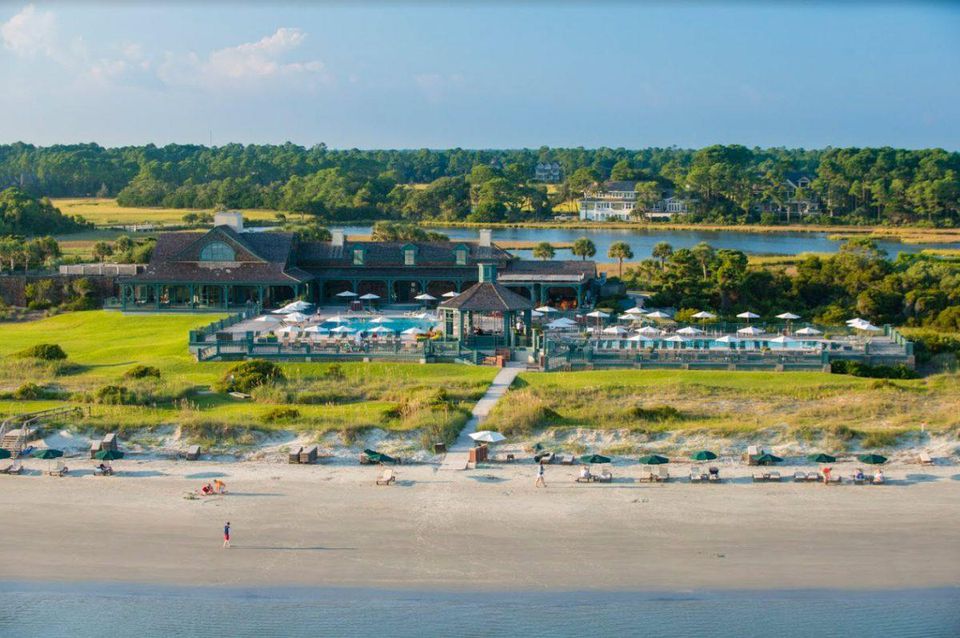
Kiawah Island is the luxurious island retreat 21 miles off the coast of Charleston you likely haven’t heard of, and for good reason. It was essentially uninhabited until 1979, and its endless acreage of unspoiled nature flecked with pines, magnolias, live oaks, and picturesque marshland create an idyllic, remote setting for the island’s multi-million dollar estates occupied by an elite crop of celebrities and affluent second (or third) homeowners. While other posh island getaways that dot the South (Sea Island and Hilton Head, to name a couple) are among the more frequented destinations, Kiawah Island remains an exclusive, insider’s escape that is designed to remain a well-kept secret. The community’s access is limited to property owners, and the only way for non-residents to stay on the island aside from privately-owned rentals is through Kiawah’s five-star oceanfront resort, The Sanctuary.
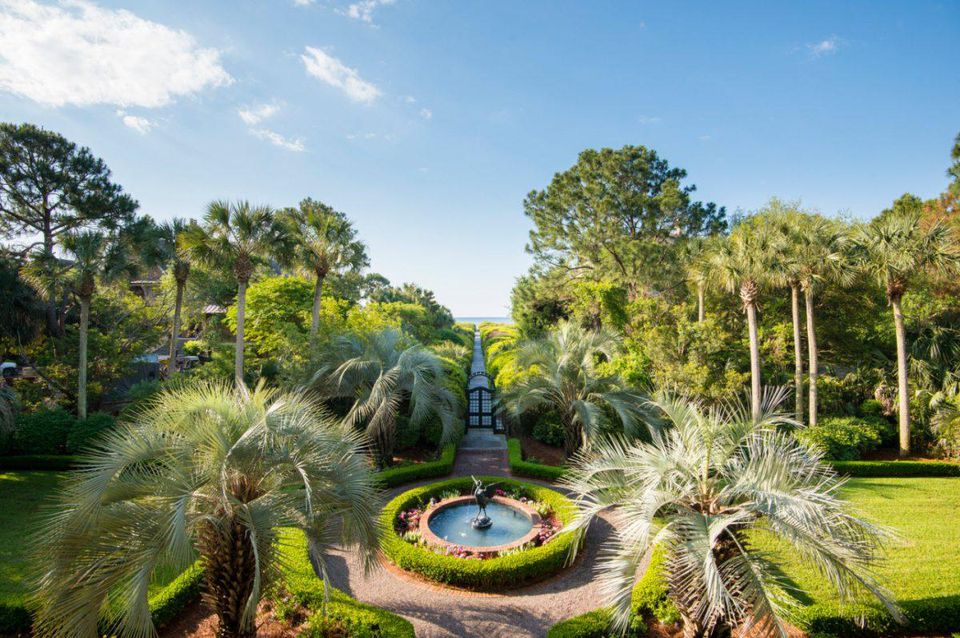
Kiawah has several communities with gated access points, all with distinct personalities, varying real estate offerings and amenities. The most covetable community is Cassique, known for its British countryside style architecture and Club House which offers the restaurant, Voysey’s with a menu crafted by the acclaimed Tom Colicchio. Further down the island, Ocean Park has the Marsh House, which is a popular gathering spot featuring a scenic infinity pool overlooking vast marshland, while River Course houses the serene Sasanqua Spa situated on the Kiawah River. The Kiawah atmosphere calls for slower, laid-back days with bike rides, fishing in the flats, or a dip in the seaside pools, which is a welcome change for those looking to escape the hustle of city life.
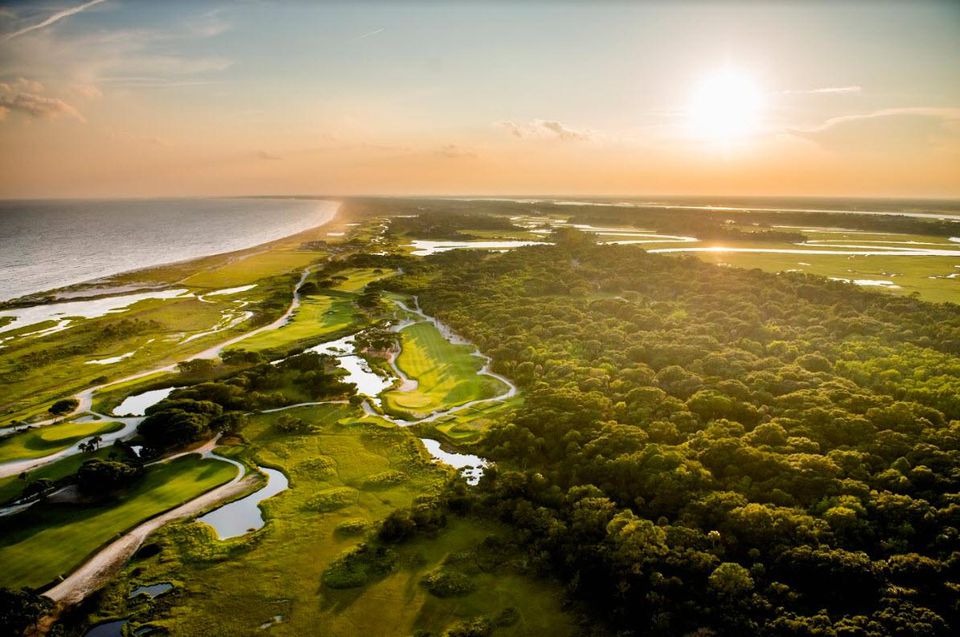
Above all, the island’s main attraction is golf, drawing enthusiasts to tee off on its seven championship courses designed by architects Pete Dye, Jack Nicklaus, Tom Fazio, Gary Player, and Clyde Johnston. The Ocean Course at Kiawah hosted the 2007 and 2012 PGA Championships, and soon the host of 2021’s tournament. With The Sanctuary as the only option for non-residents, tourists have successfully been kept off the island, but a second boutique hotel with 150 rooms will be finished just in time for the 2021 PGA Championship.
If you’re not an intense golfer, there are plenty of opportunities to work on your skills at The Golf Learning Center at the Cassique Golf Course, built to breed the next Dustin Johnson with state-of-the-art technology for lessons at every level. While Kiawah Island can thank its award-winning golf for many of its faithful residents and star-studded clientele (Bill and Hillary Clinton, Richard Gere, Reese Witherspoon, George Clooney, and even Donald Trump), the island’s mystique is in its natural beauty, deluxe yet family-friendly amenities, and southern hospitality, making it the belle of South Carolina.
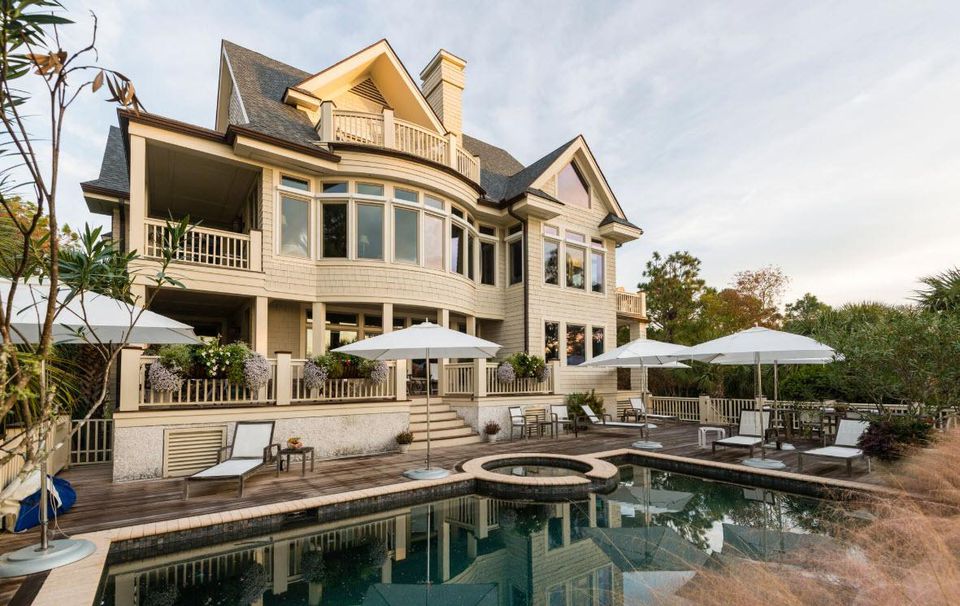
The obvious challenge is how to market such an exclusive, members-only community known best as a golf haven to potential buyers, but Chris Randolph, Partner of Kiawah Partners and South Street Partners claims that these challenges are actually their significant advantage. “Kiawah at first blush is known as a golf destination, but it’s really the concept of unplugging here that people really enjoy, and it helps us market against destinations like the Hamptons or Nantucket. There’s a real difference between coming to Kiawah versus other places where it’s ‘see and be seen’,” Randolph explains to Forbes. “People come here to truly get away, but you’re only 30 minutes away from Charleston if you want to get back into the mix. There’s a natural, still wild feeling here even though we’re very much developed.”
Kiawah Island is in its 41st year of development with 4,800 properties sold to-date, setting South Carolina records two out of the last three years for selling homes worth more than $20 million.
Travel Beauty Essentials

Going on a weekend getaway and only taking a carry on, or going to be staying in multiple locations and only want to take the basics? When traveling it’s always best to not over pack, especially when it comes to beauty products, which can tend to add a lot of weight. Here is a list of my top styling essentials for hair and makeup that can be multi used to get the most out of the products you choose to bring and can easily fit into your beach bag.
Make up
If you plan to be on the beach or at the pool during your stay, waterproof is the way to go. This will allow you to enjoy your cocktail poolside without the worry of your makeup running. If you can find options that are both waterproof and contain an SPF that is always a plus. These are a few of my go-to’s:
Tarte Amazonian Clay 12-Hour Full Coverage Foundation, SPF 15, Gives you all day full coverage, is oil free and vegan while also containing uva and uvb spf 15 protection. This foundation will still have you looking good even after an afternoon of snorkeling.
$25 Ulta 1.7 oz
Benefits cosmetics Ka BROW cream eyebrow color and brush
The 24-hour smudge-proof, waterproof color creates a natural look and includes a brush as well. Also comes in a travel size!
$12 Ulta
Kat Von D Tattoo Liner
A liquid eyeliner with a slim felt tip for precise application. Achieve the perfect winged look with this waterproof and fade resistant eyeliner. This is a great choice if you plan on doing any watersports, just skip the mascara and wear eyeliner.
$20 Sephora
E.L.F Contouring Blush & Bronzing Powder
This duo is a great save on space. It’s a mate finishing powder and blush all in one compact so you have less to pack.
$4.99 Target
Cover girl outlast lip stain
For a long lasting nontransferable lip stain try this shade “flirty nude” it’s great for most skin tones. I prefer using lip stains in lieu of lipstick because you will not have to constantly reapply and it will not leave behind those tacky lipstick marks on your glass or your beau.
$6.74 CVS
You may also go over your lip stain with a balm one that contains a spf especially if you plan to be outdoors. I like Coola Liplux-spf-30-organic-lip-sunscreen. It can last in water up to 8 hours. This lip balm, which is is organic and cruelty free, contains caranuba wax (rehydrates to prevents chapping) and raspberry butter (helps improve skins elasticity) to deliver amazing moisture.
$12 Coolasuncare.com
SKIN
When it comes to your skin the most important is sun protection and hydration. These are some of my favorites.
Jergens natural glow daily moisturizer
This is a great body lotion that creates a gradual natural looking tan while moisturizing with vitamin E and has an SPF of 20. It comes in a 2oz travel size which makes it great to throw in your makeup or beach bag.
$2.49 Target
Hawaiian Tropic Silk Hydration Sunscreen, Face, SPF 30
A weightless oil-free sun screen specifically designed for your face. You always want to use a sunscreen specifically designed for the face as these contain less harsh chemicals than other sunscreens. Comes in 1.7 fl oz
$7.92 Walmart
Neutrogena Makeup Remover Cleansing Towelettes-Hydrating
Wash the day away. These are great for removing all of your waterproof makeup in the evening but also super refreshing when used in the morning.
$5.97 Target
HAIR
I recommend getting a blow out or blow drying your hair yourself the night before you travel. It’s recommend to shampoo every 2-3 days depending on your hair type, texture and the activities you are planning on doing. A dry shampoo can be used on day two and three to keep your blow out longer and add volume. This will come in handy especially if you plan on doing a lot of walking.
Not your mothers Clean Freak dry shampoo
Great for freshening up your locks between shampoos, smells great and adds tons of volume. Also available in travel size.
$2.99 Walgreens
Hair Tip
If you are going to be in the water and have highlights or color treated hair, try to avoid getting it wet as the chlorine and salt water can fade color and be especially drying. If you must, try wetting your hair beforehand with fresh water and applying conditioner, leave it in so that when you do go in the water it cannot absorb any salt/ chlorine.
Most hotels provide shampoo and conditioner but they are not always the best quality, I suggest bringing the shampoo you are currently using and placing in a travel container. If you are taking a carry on you will need to use 3.4oz containers and have them all fit into a quart sized bag. A great alternative from liquid shampoo is a shampoo bar. These concentrated shampoo bars are great for the environment and great for traveling. You can find many online, I happen to like Seanik from lush. This bar gives you great volume. Aveda also has travel size shampoo and conditioner for all hair types. This allows you to mix and match, for example, shampoo for color treated hair and conditioner for dry hair.
$9.99 Aveda
$11.95 Lush
Aveda control force hairspray
This is my hairspray of choice. The aerosol spray has a strong hold and is great for flyaways. This comes in travel size, and know that a little goes a long way.
$9.99 Aveda
The Art of Hospitality – Lose Yourself in these Hotel Museums
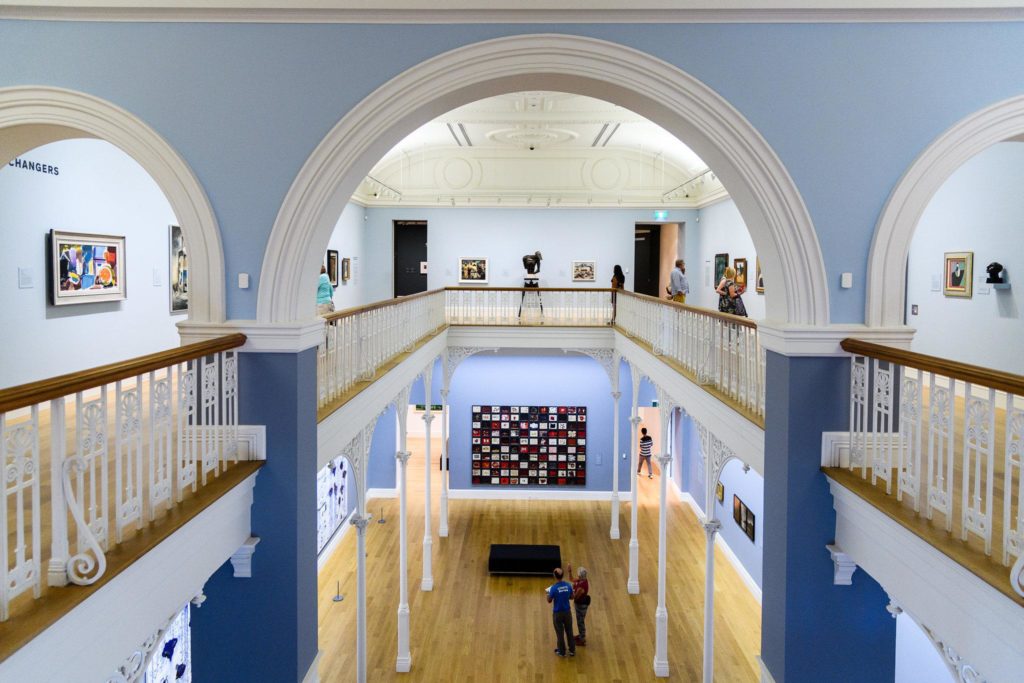
By Natalie Compagno and Greg Freitas
The writer Thomas Merton noted, “Art enables us to find ourselves and lose ourselves at the same time.” Isn’t that also what a great hotel provides?
The best luxury hotel experiences embrace art–surrounding busy guests in culture and beauty. Upon arrival, inspiring art greet guests in the lobby. Some of these master works would thrive at the Met or the Louvre—but they are on display, hanging in the Four Seasons Seattle instead. The Silo impresses with its creative use of space, the structure itself is a work of art. Sculpture seems to rise from the earth in the South of France, and glass from the sea transforms into glistening, larger-than-life urns in Maldives. Check into these hotels and take a world tour of mesmerizing art.
Baha Mar, The Bahamas
In the Bahamas, a trio of hotels quench a variety of artistic thirsts. Art is the soul of the Baha Mar family, comprised of Grand Hyatt, Rosewood, and SLS. With over 2,500 pieces from local artists, the hotels proudly share their Bahamian heritage with their guests. John Cox, renowned mixed-media artist and former chief curator of the National Art Gallery of The Bahamas, shapes the collection. Colors shift, media mix, and the traditional and contemporary share a home in a joyful display. Highlights include From the Sea by Dominic Cant, which melds photography and sculpture to create an underwater sensation, and the Fairwind exhibit, which offers an exploration of over 100 years of Bahamian art.
The Silo, Cape Town, South Africa
“Art is an expression of culture and life, tying the viewer to a specific sense of time and place,” says Liz Biden, owner and designer of The Silo, Cape Town, South Africa. “Our contemporary African art collection really brings The Silo hotel to life for guests, affording them unique insight into our African heritage through modern artistic interpretations.”
Even as a blank canvas The Silo is a work of architectural art, before the rooms are adorned in fabrics, chandeliers, and paintings. The hotel is set in a historic restored granary–with multi-faceted windows, majestic views, and a perfectly designed rooftop patio. Add some of Africa’s most talented, emerging, contemporary artists-along with eclectic design and décor–and The Silo becomes a complete masterpiece. The hotel sits atop the Zeitz Museum of Contemporary Art Africa (MOCAA), the first major museum in Africa dedicated to contemporary art. The Silo maintains its own collection of South African art, along with The Vault, a private gallery displaying rotating African artists. Request the Royal Suite–once inside guests become a part of the tableau.
Soneva Fushi, The Maldives
Soneva Fushi in the Maldives is a luxury resort in the Baa Atoll, a UNESCO Biosphere Reserve coral reef. Resorts in this fragile country face difficulties with waste disposal – many glass bottles are recycled but some are dumped into the ocean. Soneva Fushi found a solution. By taking on the process of recycling themselves, beer and wine bottles becomes luxury glass items and fine art sculptures. The resort houses its own state-of-the-art glass blowing studio and guests watch world-renowned glass artists create magical shapes. The studio is run by Fulbright scholar Kevin Christison; he brings in artists from around the world for a unique creative opportunity. Collectors rejoice – there is a retail boutique as well as an art gallery.
Le Royal Monceau Raffles, Paris, France
Generous hotels use their art as a calling card for art lovers. At Le Royal Monceau Raffles Paris, Art District Gallery is more than a social hub displaying contemporary art, it is a working gallery where collectors enjoy and purchase unique works. The space is dedicated to premiere exhibitions in Paris: retrospectives, commissions for Le Royal Monceau, and the presentation of previously unseen collections. Guests have the added benefit of an art concierge, Julie Eugène, who curates their experience with insider art tips and local art happenings. An art bookstore and 99-seat cinema theatre seal the art deal.
Hotel Lungarno, Florence, Italy
Synonymous with stylish footwear, fashion and art intertwine at the Ferragamo family owned Hotel Lungarno, just steps from the Ponte Vecchio in Florence, Italy. Home to one of the largest collections of privately owned 20th century art, it contains over 450 pieces including Picasso, Cocteau, and many important Italian artists. The art is grouped into narrative itineraries–a tour through the stories of the artists. The first features Pablo Picasso and his colleague Jean Cocteau, and a slew of Italian contemporaries. Antonio Bueno’s story is enhanced by an interview with his daughter, while Venturino Venturi’s tortured history is explored through his tableaus. The Pop Art grand finale highlights graphic art from innovators and futurists, from Jules Cheret to Lucio Venna. Art fanatics will get so caught up in the tours they shouldn’t neglect the Uffizi–just a few steps away across the river.
Hotel Du Cap-Eden-Roc and Chateau Saint-Martin & Spa, South of France
Art can be fleeting, a reminder of how beauty possesses an ephemeral quality–even something seemingly permanent and powerful. Hotel du Cap-Eden-Roc and Chateau Saint-Martin & Spa in the South of France have partnered with London’s Blain Southern gallery to present a series of art exhibitions across Oetker Collection’s hotels. Renowned French sculptor Bernar Venet’s rusted corten steel creations accent the Provençal landscape–while boldly changing with the environment. Circles left open beckon as the emotional sparks from curved towers reach toward the sky. Venet is local to the region and developed his artistic calling card using math and science to impact contemporary art in the sixties. For an added experience “magnifique” the Venet Foundation’s collection, with works from Frank Stella, Dan Flavin, and others–is open to the public summers in Le Muy, just an hour’s drive from both Hotel du Cap-Eden-Roc and Château Saint-Martin.
21C Museum Hotel, Louisville, Kentucky
A giant gold replica of Michelangelo’s David greets hotel arrivals outside at twice the original’s size. Flowers climb the wall while a canvas proclaims “I LIKE BUYING ART FROM ARTISTS WHO ARE STILL ALIVE.” Some rooms cover guests in a glass quilt – an astounding three-dimensional window and ceiling decoration that creates comfort through kaleidoscopic patterns. 21C Museum Hotel Louisville debuted in 2006, the inspiration of local entrepreneurs Laura Lee Brown and her husband Steve Wilson. They redesigned historic tobacco warehouses into a boutique hotel where 9,000 square feet were saved for exhibition space. Avid contemporary art collectors, it’s as if the couple created their perfect home, bursting with eclectic art from all over. Sculpture, glass, statues, 3D and mixed media presentations, oil, photography–even a Bison head. Guests wander for hours as if in a museum. Non-guests benefit as well – the galleries are open to the public 24 hours a day, 365 days a year and are free to visit. No excuses art fans! 21C has expanded the concept to its other boutique hotels, from Ohio to Oklahoma.
Four Seasons, Seattle, Washington
The Seattle location of the luxury hospitality group proudly bills itself as an informal extension of the Seattle Art Museum. The hotel boasts the largest collection of World War II-era Pacific Northwest artists outside a museum, and draws its inspiration from the surroundings. With a vision influenced more by Asia than Europe, these artists were dubbed the “Mystical Painters of the Northwest”–Mark Tobey, Morris Graves, and others. The Four Seasons showcases these works throughout the lobby and on each floor. Grab a brochure at the front desk then push each button on the elevator for the complete tour. When the doors open–a different masterwork awaits.
To enhance your Four Seasons art adventure, enjoy the Chihuly Up Close Experience. Guests can tour the legendary glass artist and Tacoma native Dale Chihuly’s private Boathouse Studio, followed by a visit to Chihuly Garden and Glass to commune with some of the most beautiful art in the world. There’s no better finale to this world art tour than visiting the studio of a famous artist who is still productive and very much alive.


 Le Salama
Le Salama